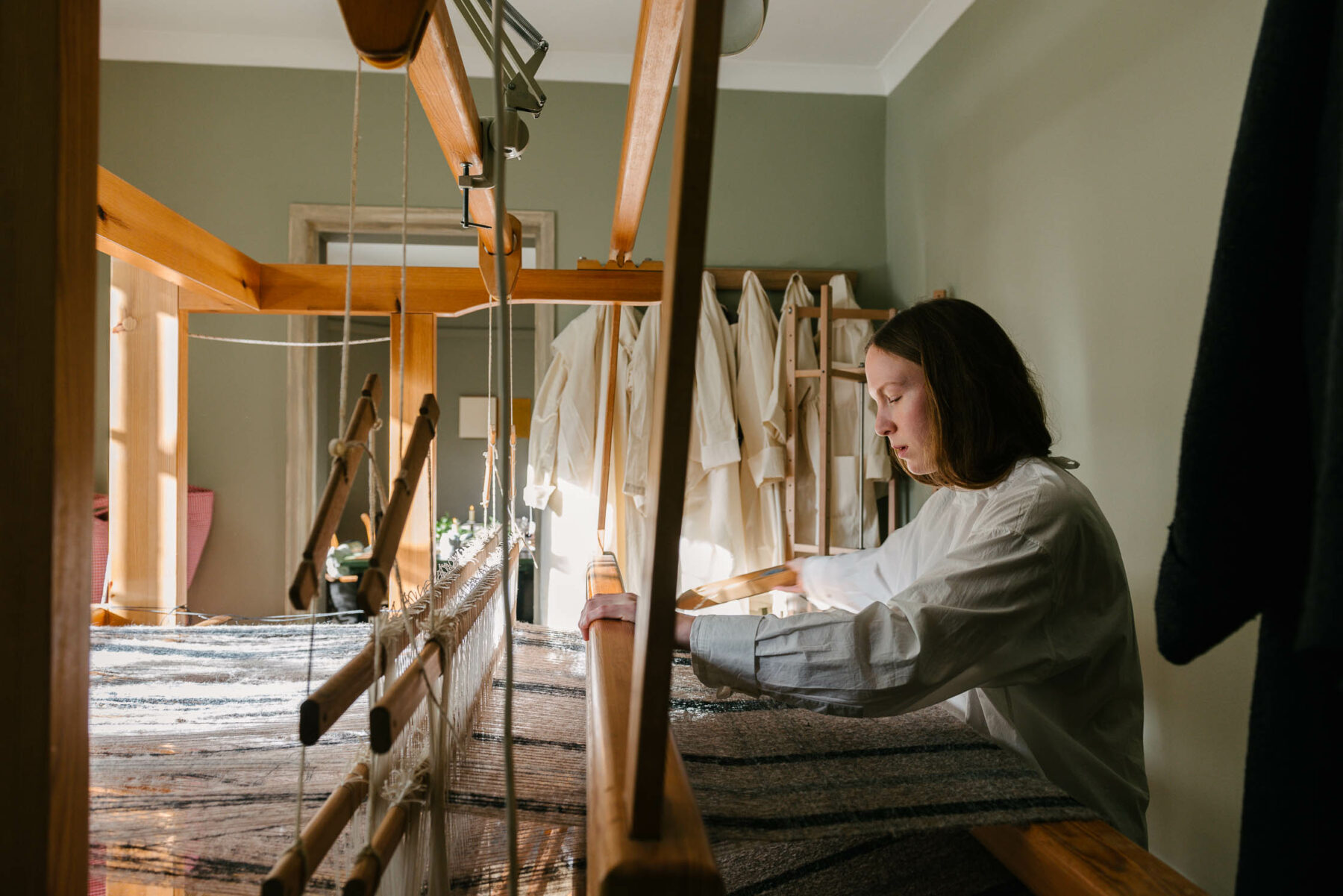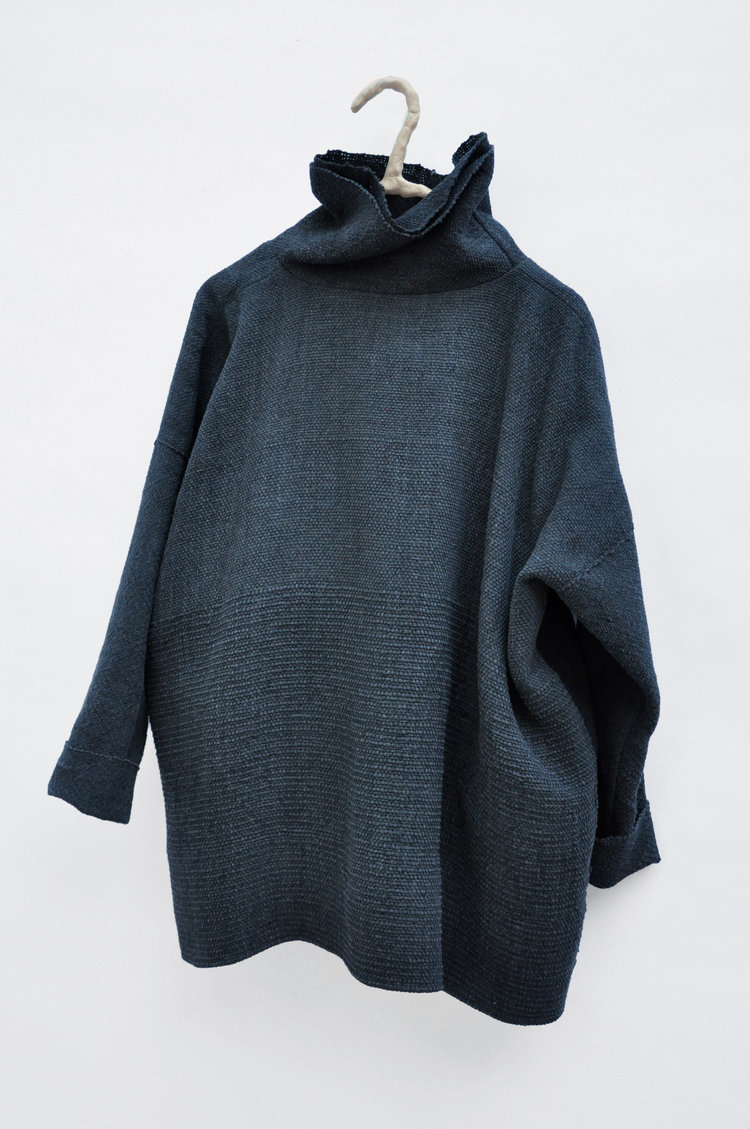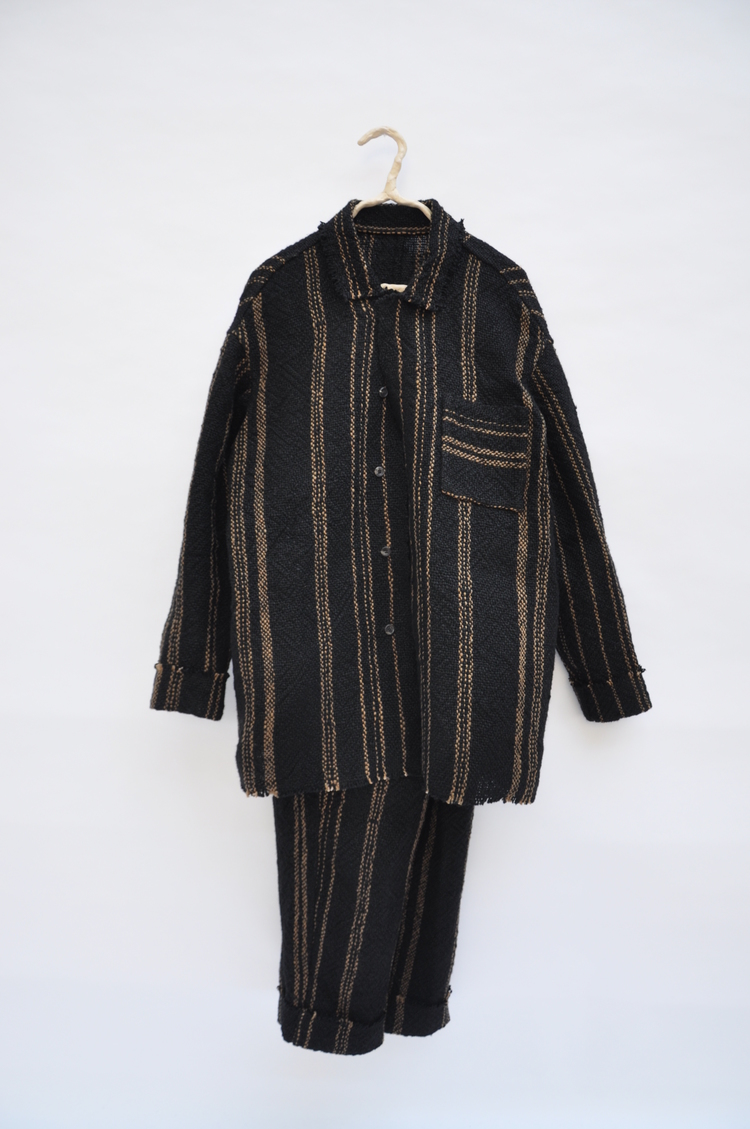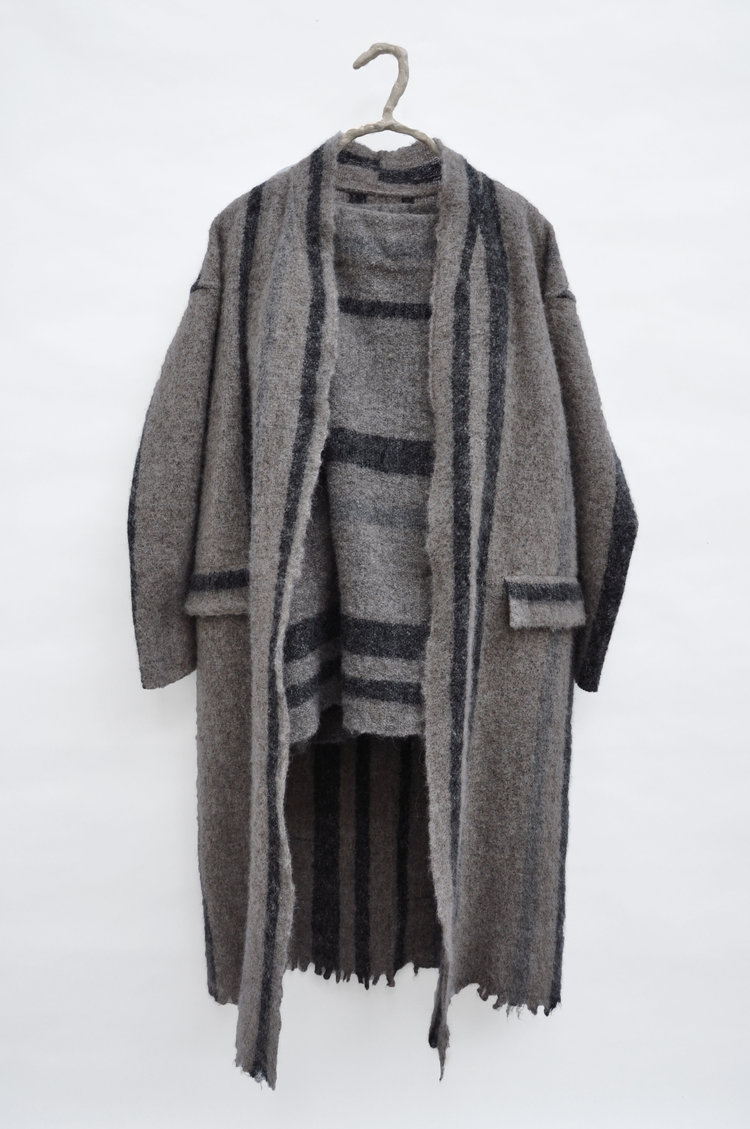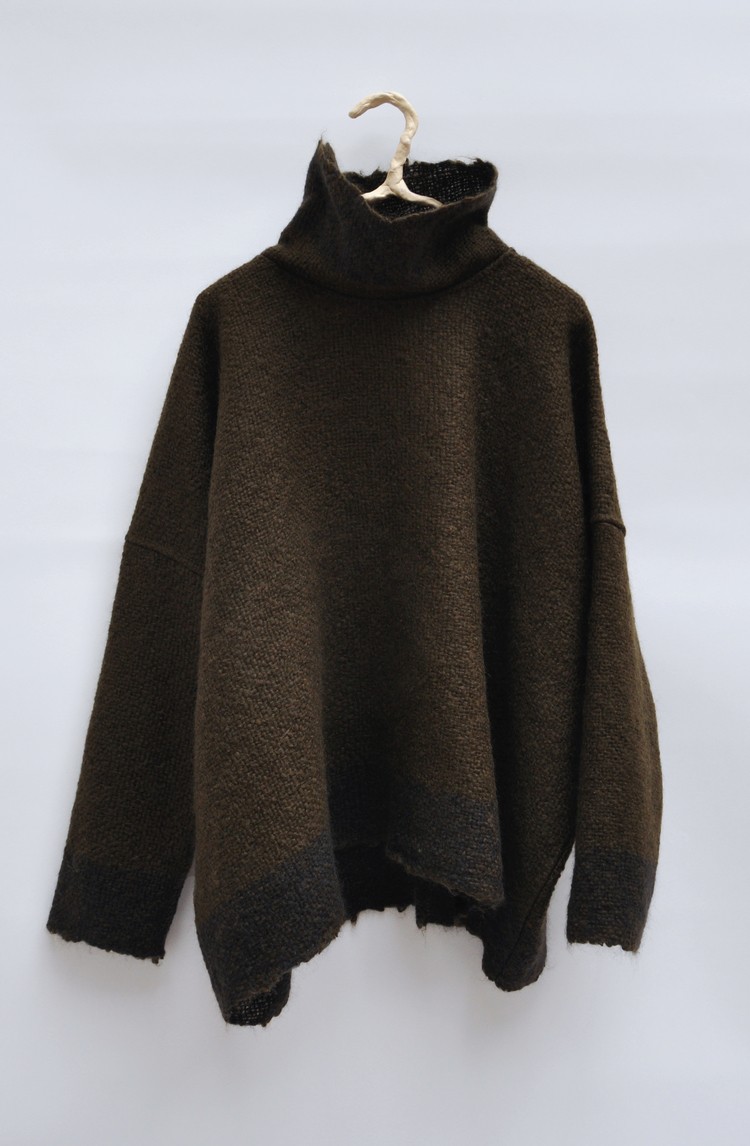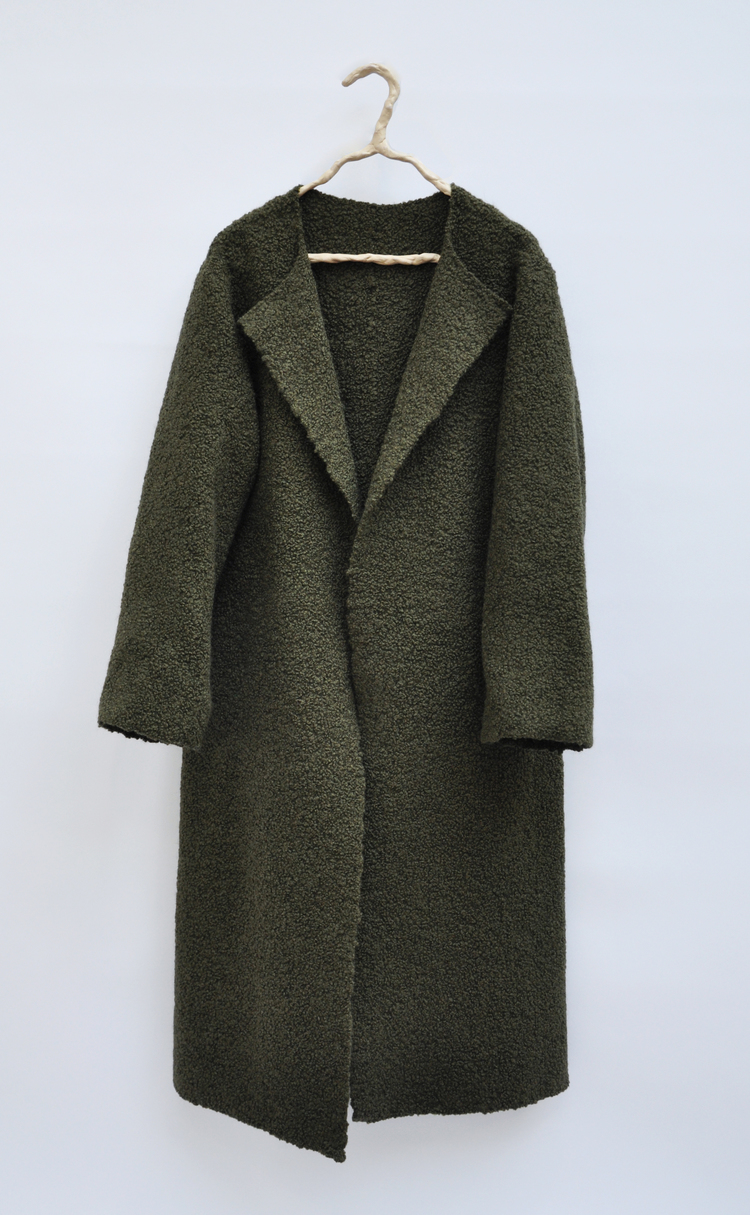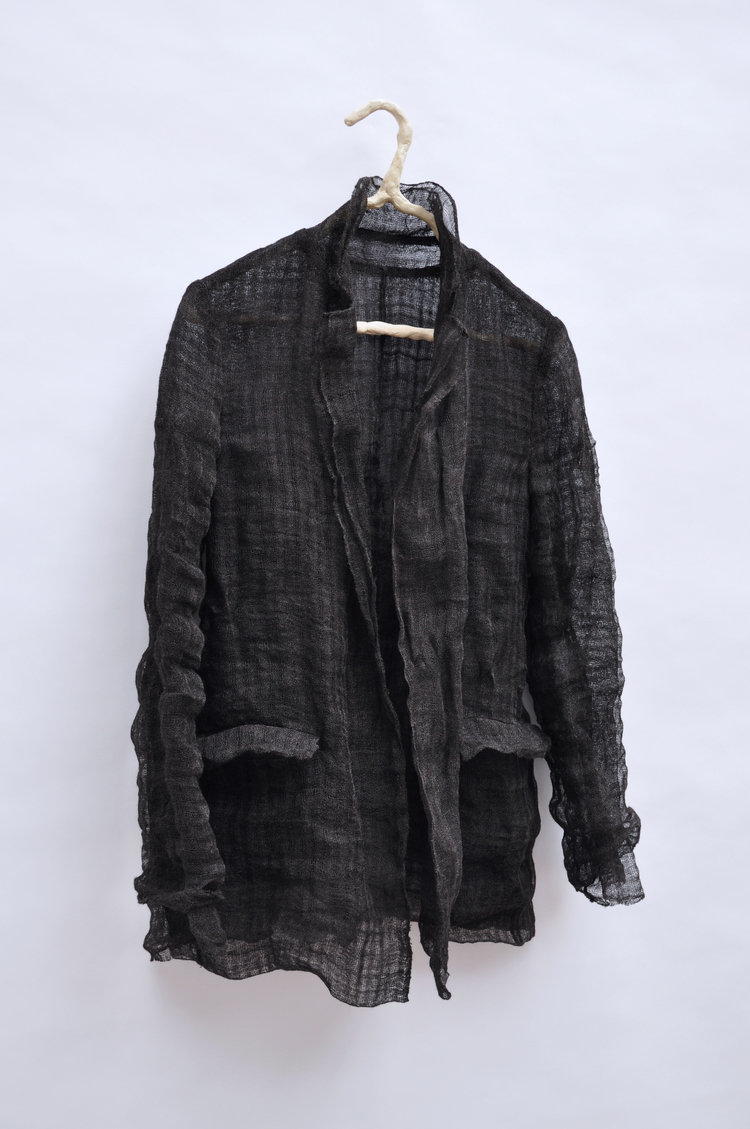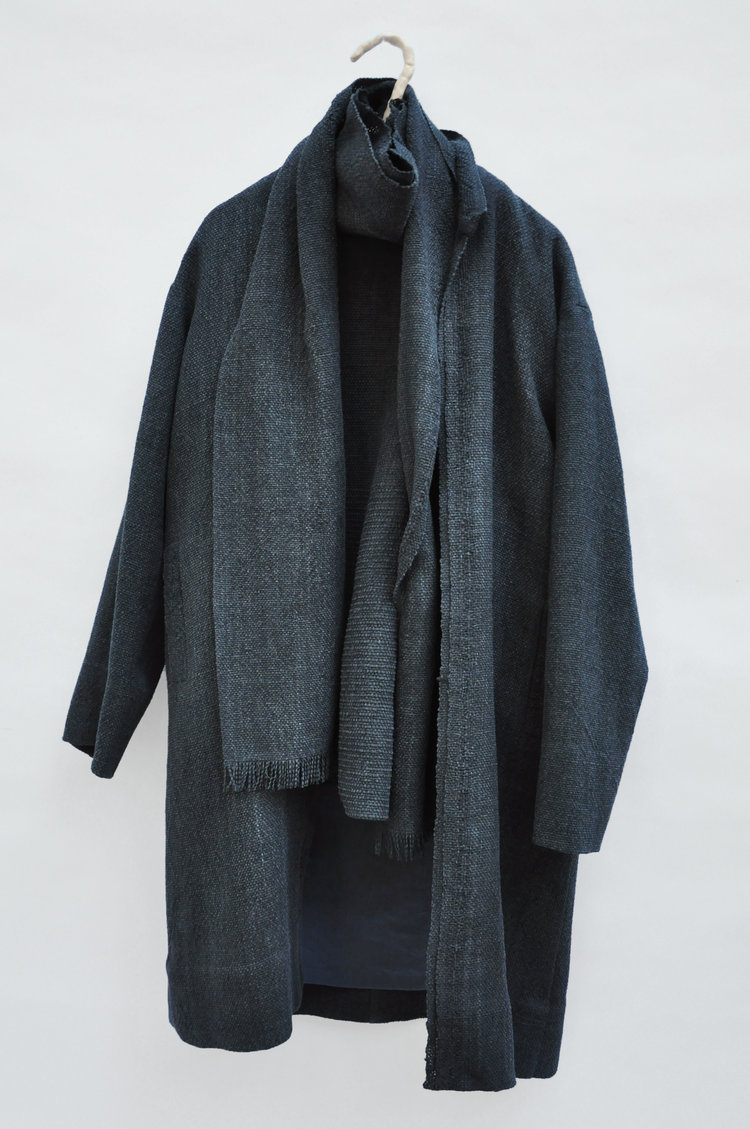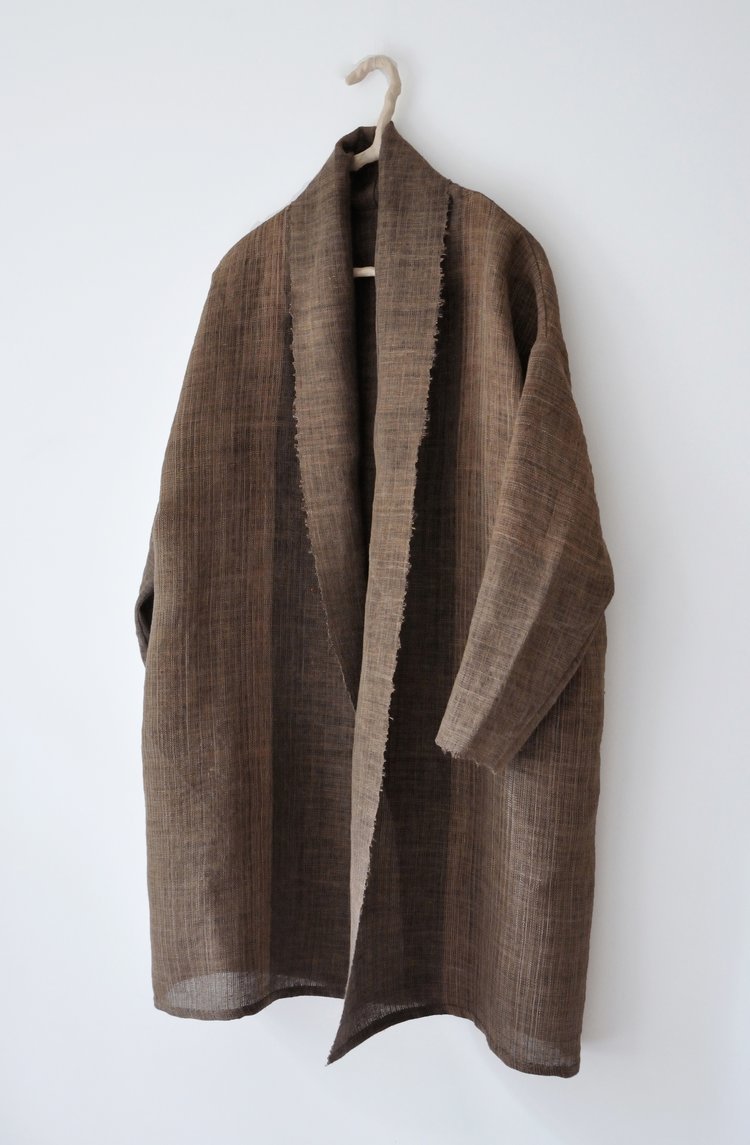“…She appears, head lifted; she is borne upon a shuttle—an image from a Nordic tale, a drama of the sea, with waves to navigate,savage or tame. But let us leave the sea…”
Amy Revier looks up from the poem she is reading aloud, an introduction of sorts to Isabella DuCrot’s Text On Textile, written by Patrizia Cavalli. Bathed in the mid-afternoon sunlight that streams through the membrane-thin windows of her 1930s London flat, the look on her face goes beyond that of someone reciting poetry they merely like (love, even). It’s a look that says, this captures something about me. Wordless, labor-intensive art rendered in the immediacy of text on a page.
Amy immerses herself in words. Just take a look at the ones sprinkled across her website, or the archaic tomes that adorn the bookshelves of the home she shares with her partner, the American philosopher-slash-rare book collector Clayton Littlejohn. They are not (for now, at least) the way she primarily chooses to express herself. Amy is a weaver, undoubtedly, and yet there is often a tendency to categorise creatives like her into conventionally aspirational roles. To say: this is what you do and this is who you are. An artist. A sculptor. A performer. A fashion designer. Pick one, be that person. Over the course of a long afternoon spent in and around her home in North London’s leafy Hampstead it’s apparent that she is, and has been, all of these things to varying degrees. She floats in that liberating space ‘in-between.’
Amy created a DIY for woven centerpiece made of foraged materials that you can try your hand at over on Werde Magazine. It’s all part of our collaboration to uncover personalities working creatively with nature.
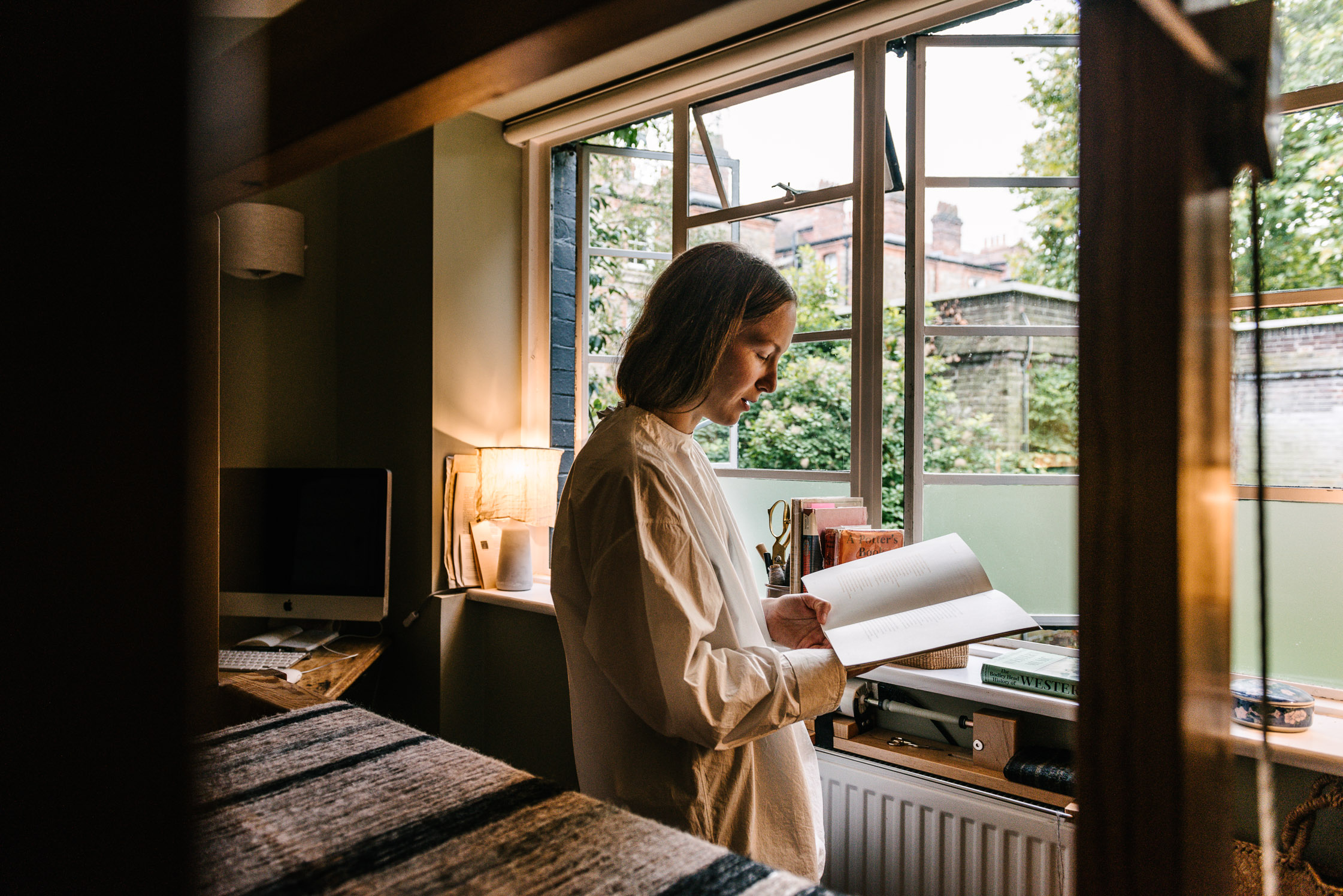
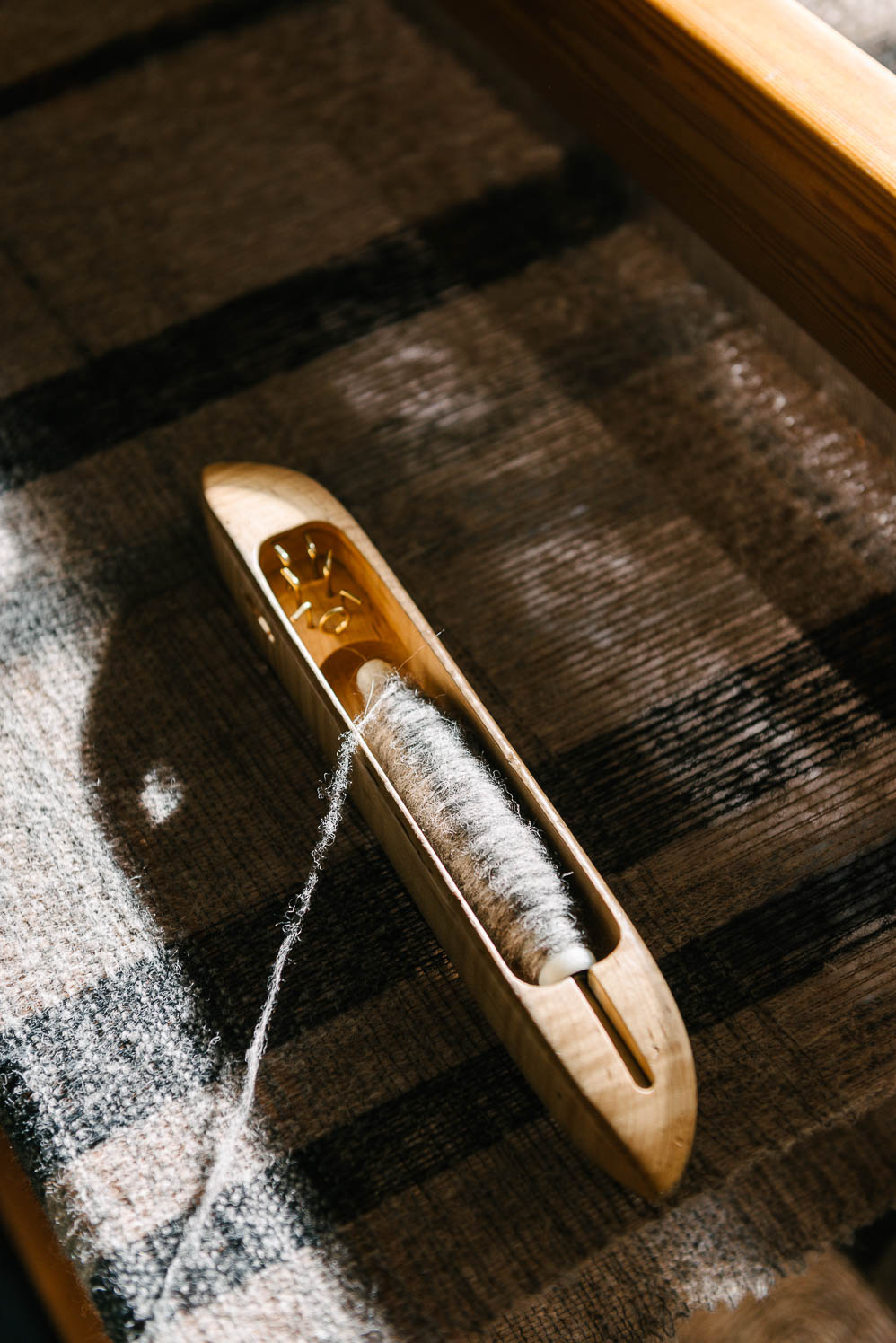
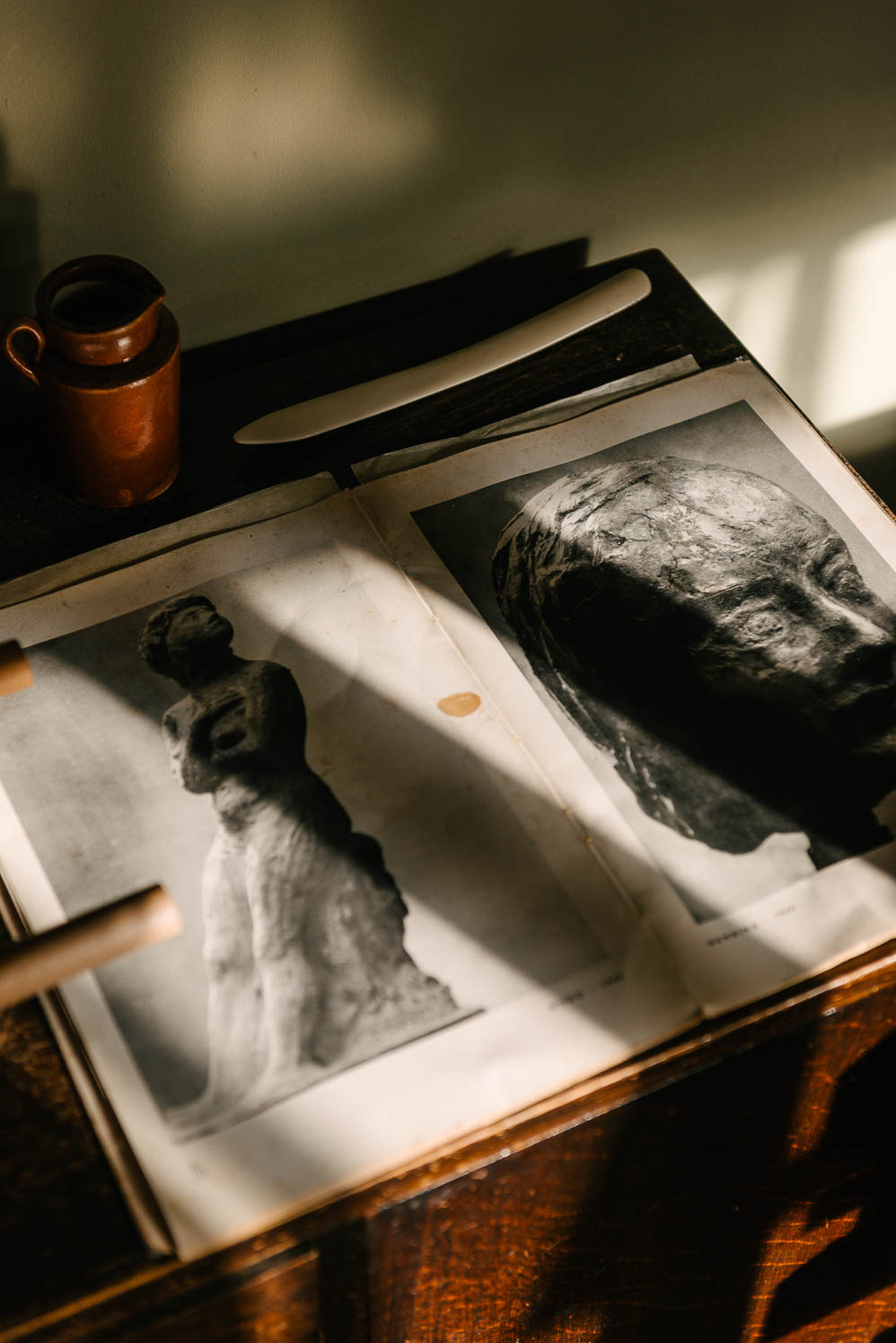
Amy weaves. From a Texas childhood in the company of ranchers to big-city Dallas art school and a reflective period in Iceland. Finally to here, North London, her home for the past five years. She weaves. Right at this moment, she is winding through the rough-hewn flora of the garden she shares with the other residents in her building, emerging between a desolate tennis court and old-fashioned squash court that has seemingly been forgotten in time by everyone apart from Amy and her beloved Border Collie, Agnes. (The pair enjoy a formidable squash rivalry, says Amy matter of factly.) She spent the morning slow-cooking brisket to go with the homemade tacos and three different types of salsa – also homemade – that now sit ready by the outdoor grill. “It’s not really Mexican, more ‘Tex-Mex’” Amy says as she pulls a steaming dish of refried beans off the heat. “My grandfather was a rancher and I would make these types of meals with my dad when I was ten years old.” She places the beans down and gives the avocado-based salsa a quick stir, steps back to survey the impressive spread. “We were always making things,” she shrugs. “I grew up near Austin but in the countryside. My grandfather made saddles, my brother went on to become an architect… we just used to build shit.”
“There’s so many layers to get through and I’m fascinated by how these layers are navigated.”
A childhood spent making things led to art school in Dallas, specialising in sculpture. It is a time and place that Amy speaks of with great affection, yet nevertheless saw her beginning to drift away from the conventional ‘art world’ path she initially set out on. “This was between about 2005 and 2009, and at that time textiles were just considered totally unacceptable in the art world,” she says. “They were seen as ‘craftsy,’ with all these connotations of femininity and domesticity… But I had no interest in any of that!” Beyond the purity of simply making, Amy’s work focused on hibernations and cocoons; her woven textiles became a part of that, a tangible layer that nurtures yet disrupts the relationship between the internal and external world. “You know, I’ve always felt I’m smart internally but that it doesn’t always come across externally. There’s so many layers to get through and I’m fascinated by how these layers are navigated. The work I was doing sculpturally tapped into this, metaphorically mining to get to another land. Another plane.” It was whilst exploring these themes that her work became as much about the performance of weaving—the navigation, the process—as it did the final sculpture. The latter was inseparable from the former.
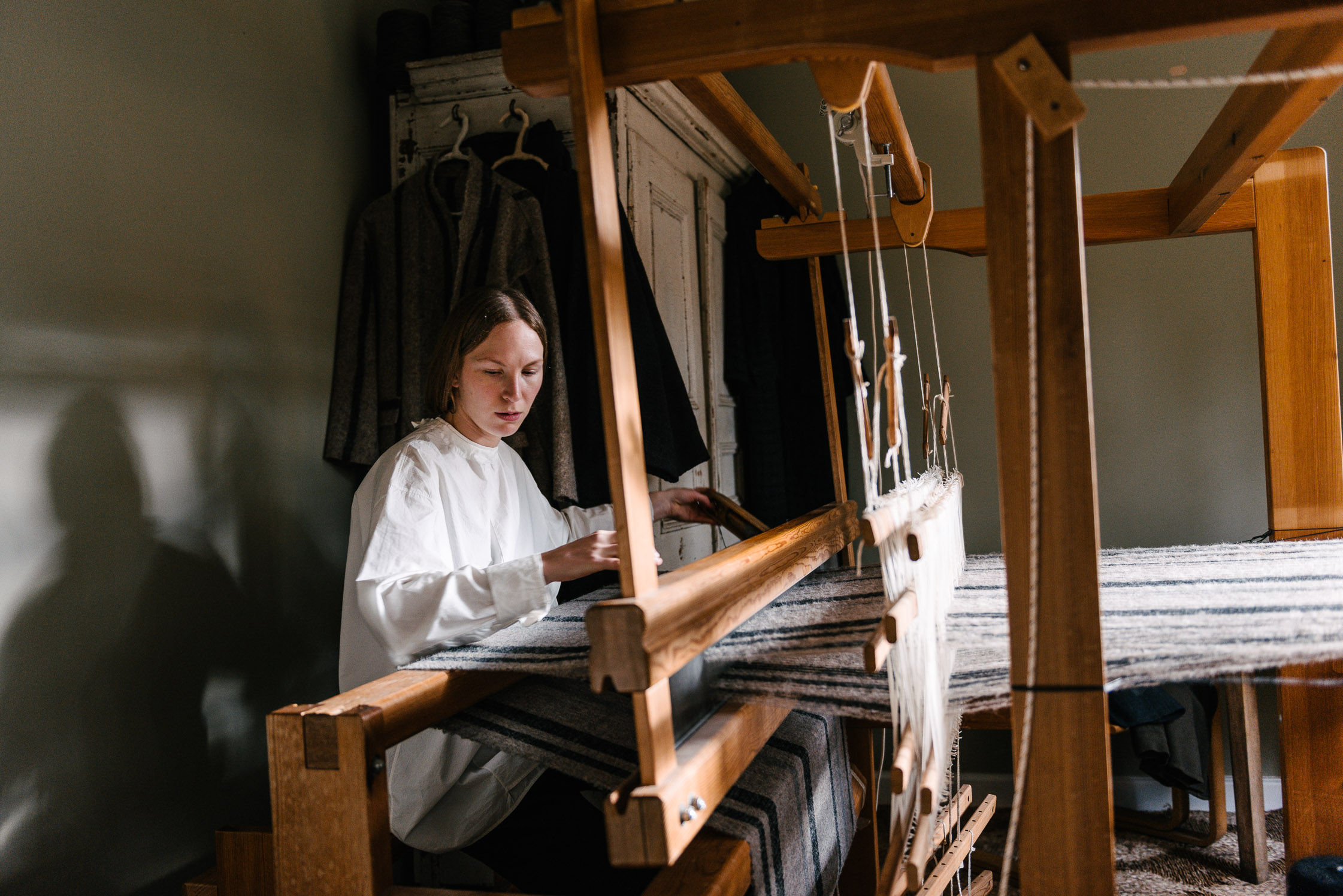

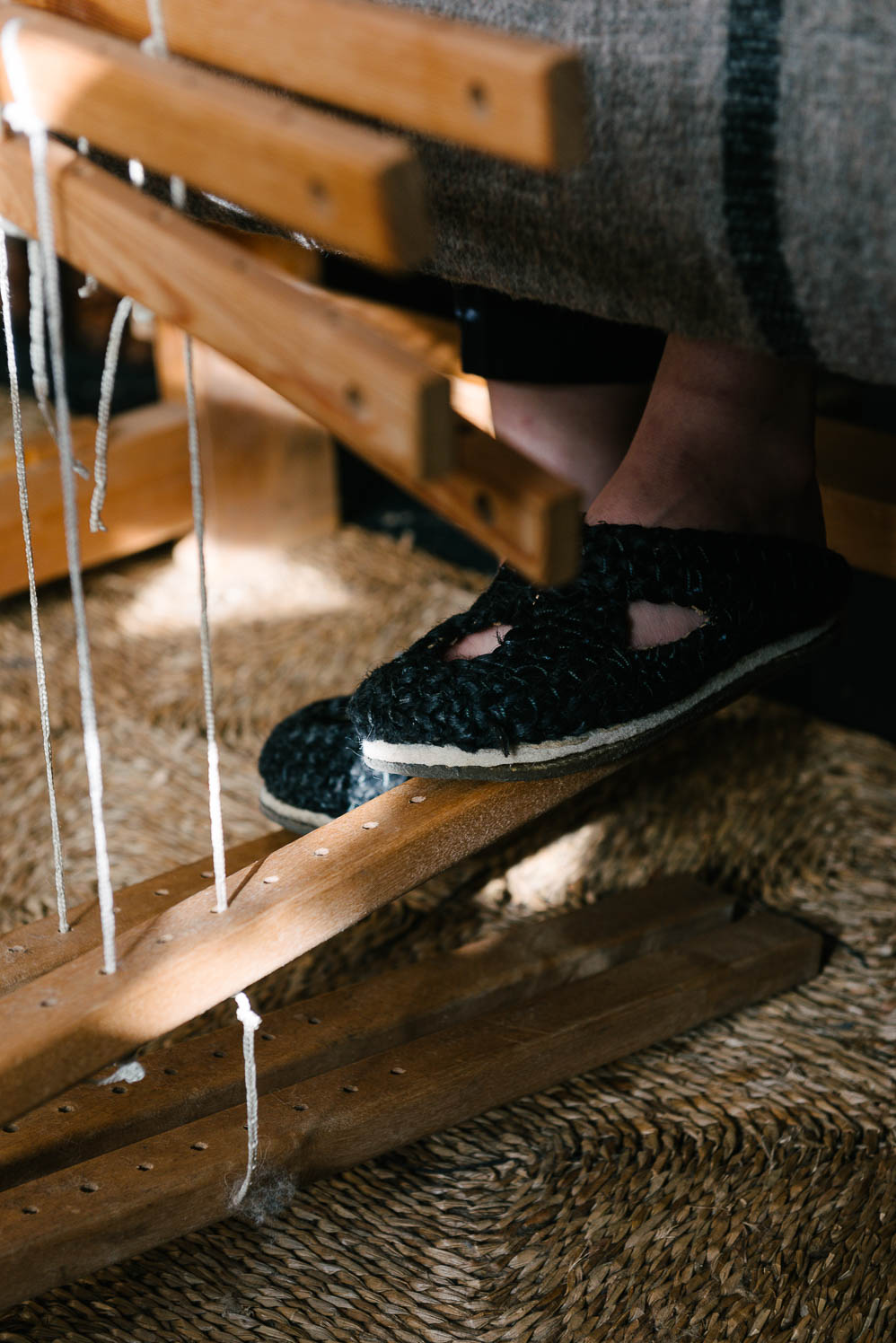
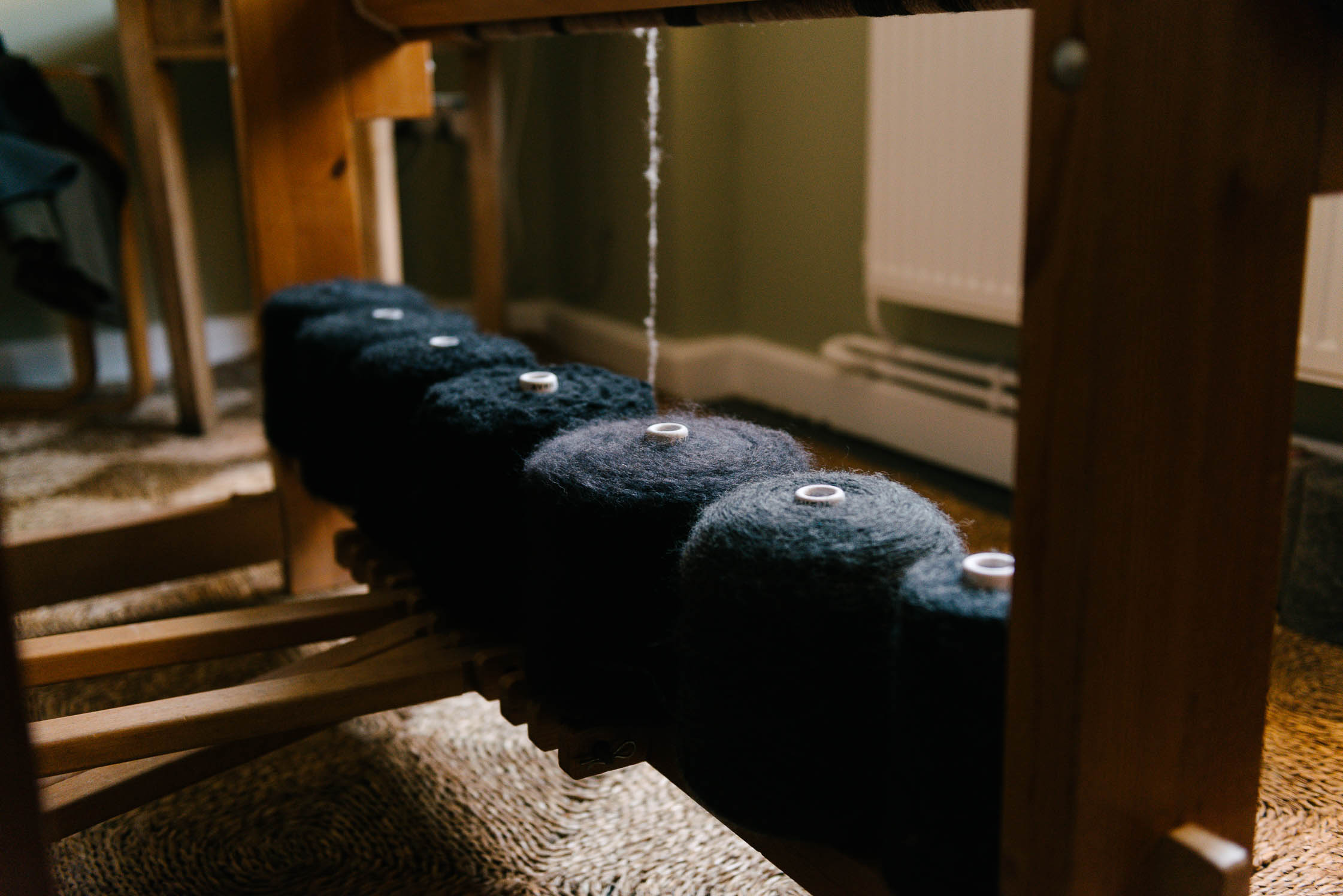
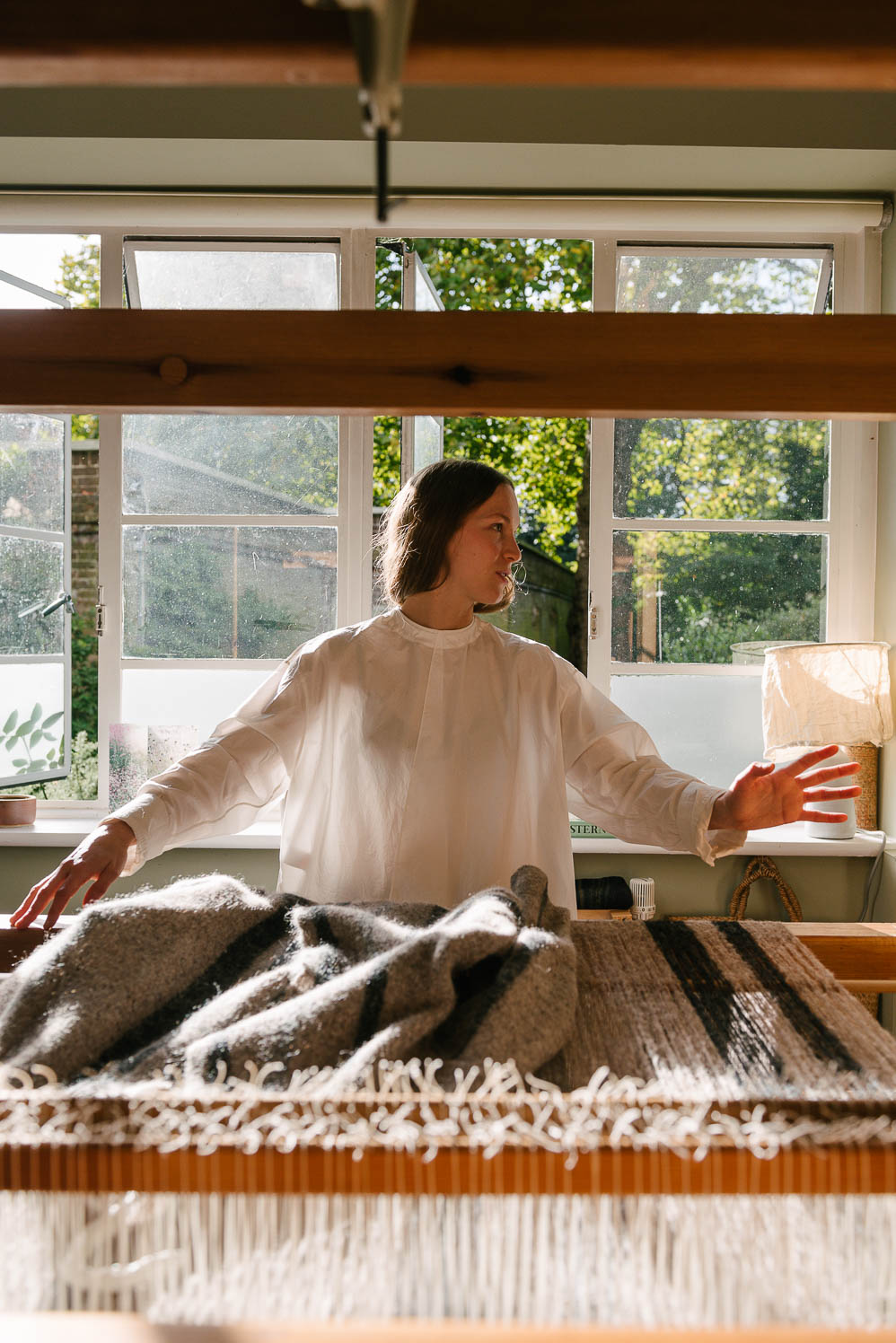
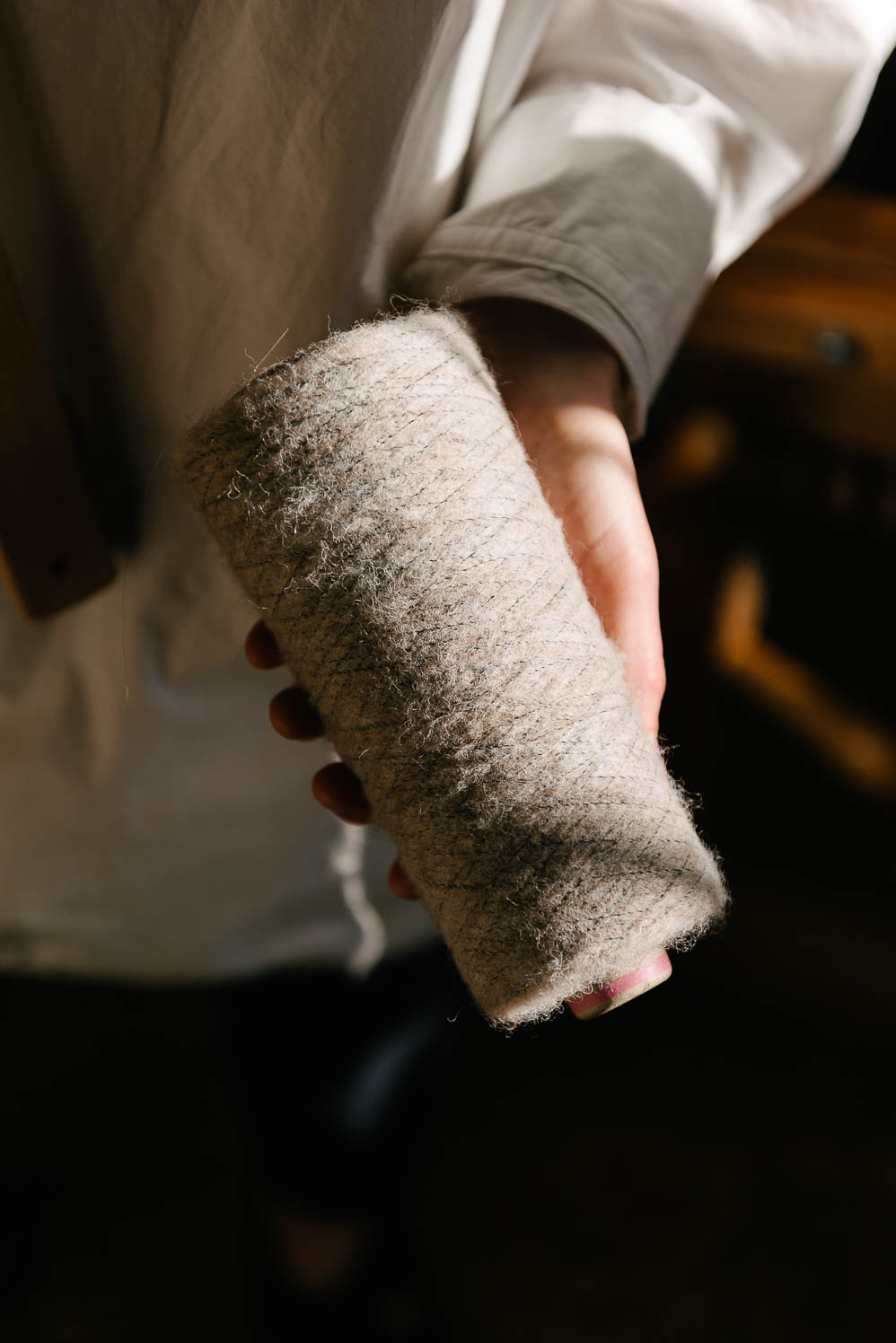
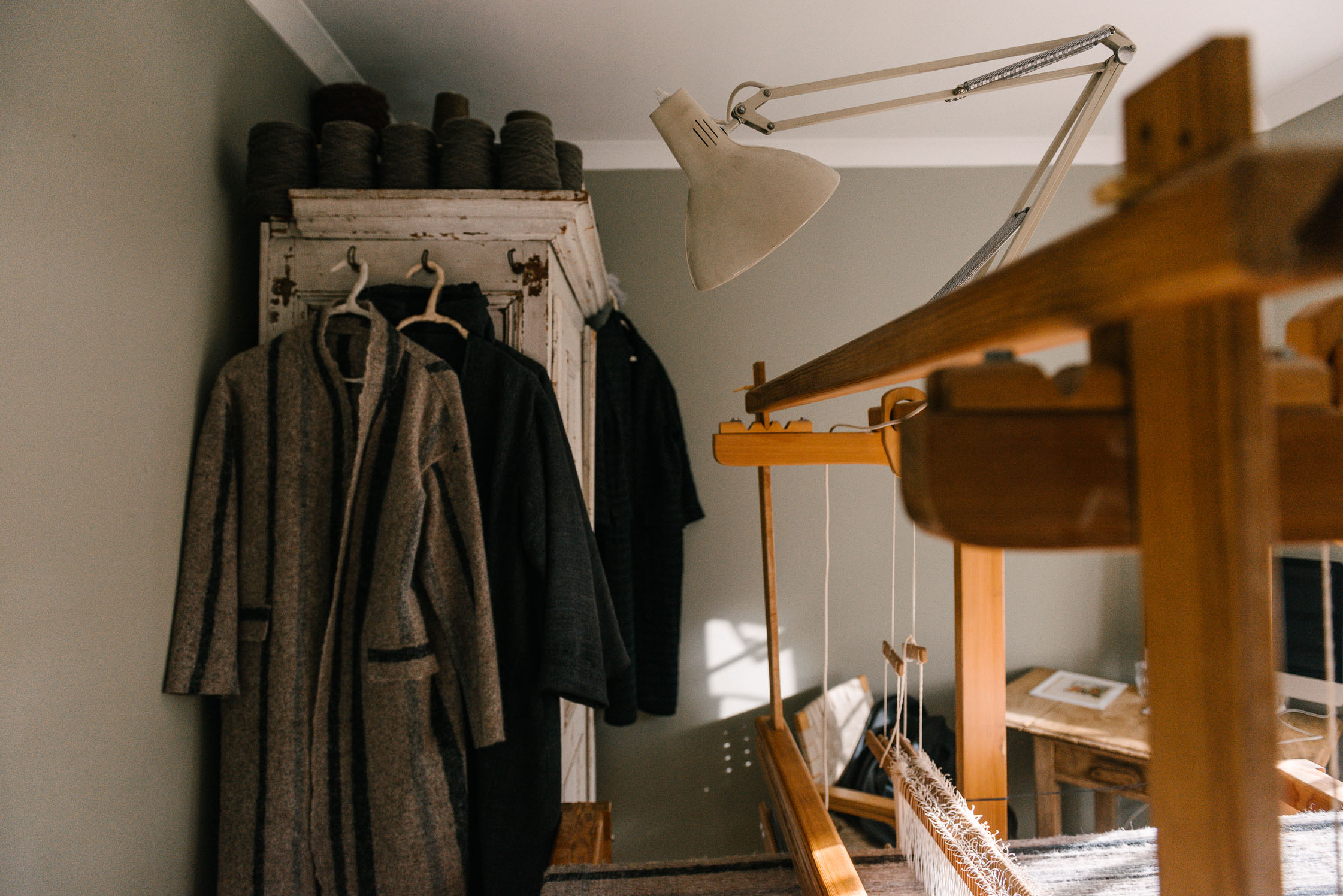
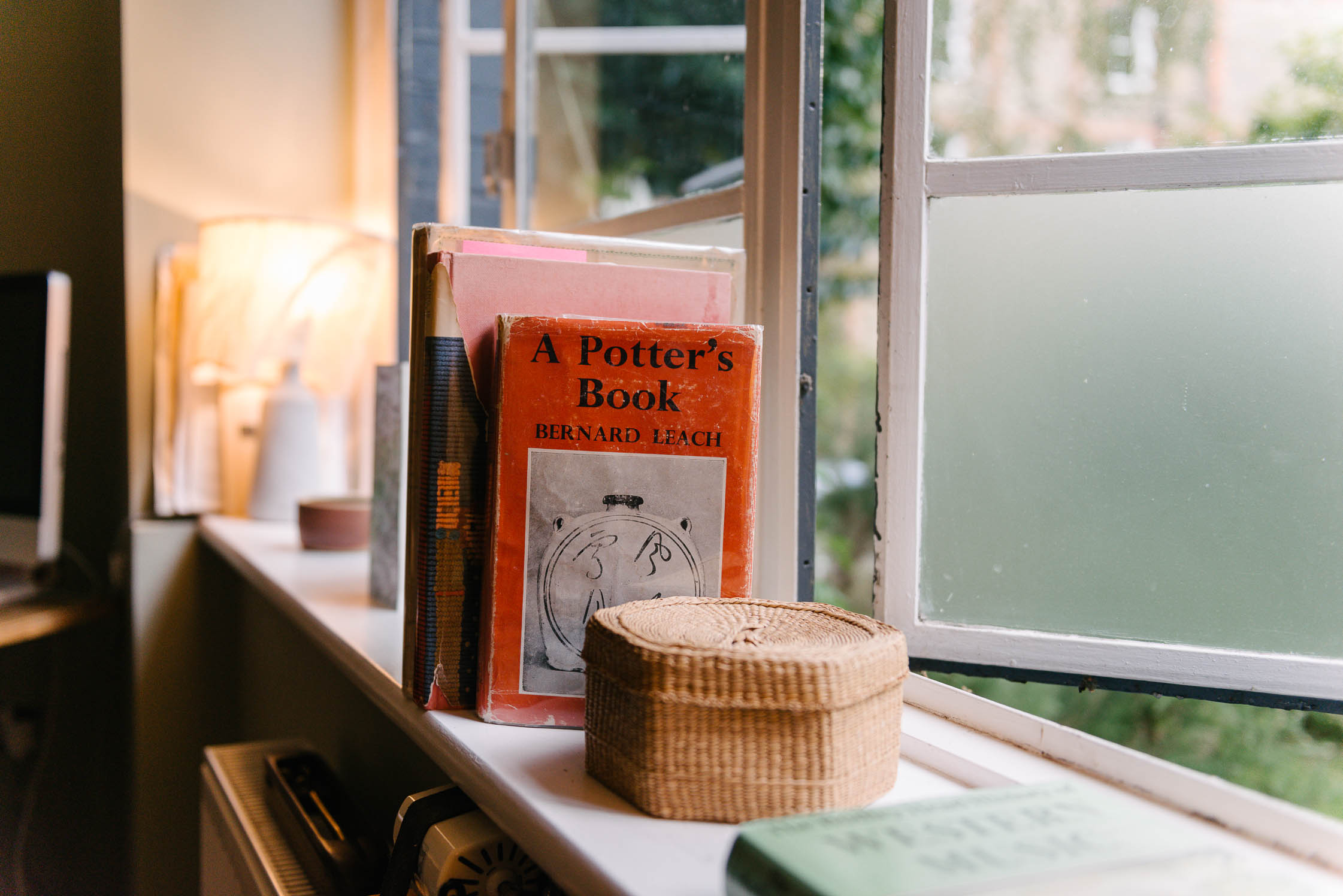
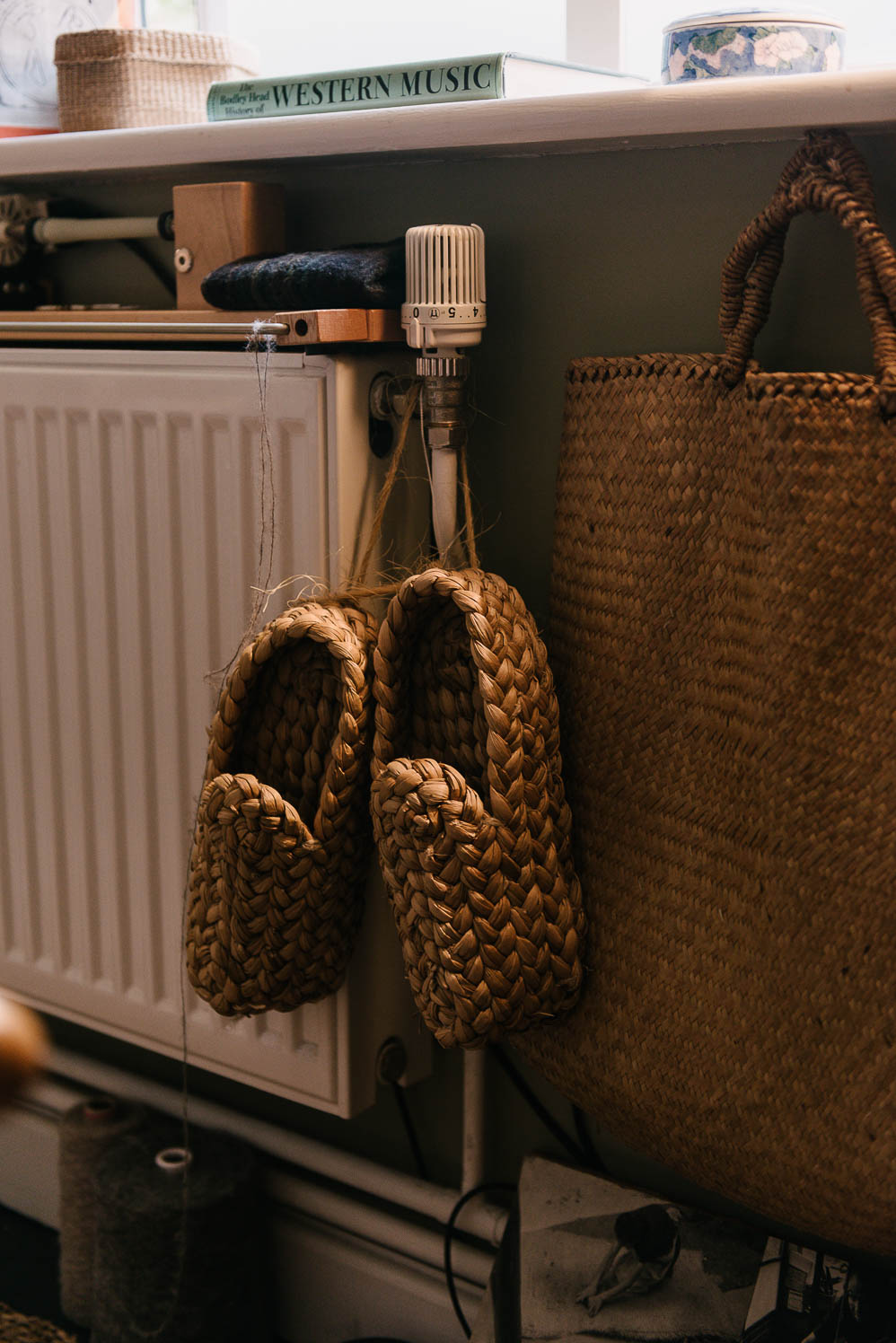
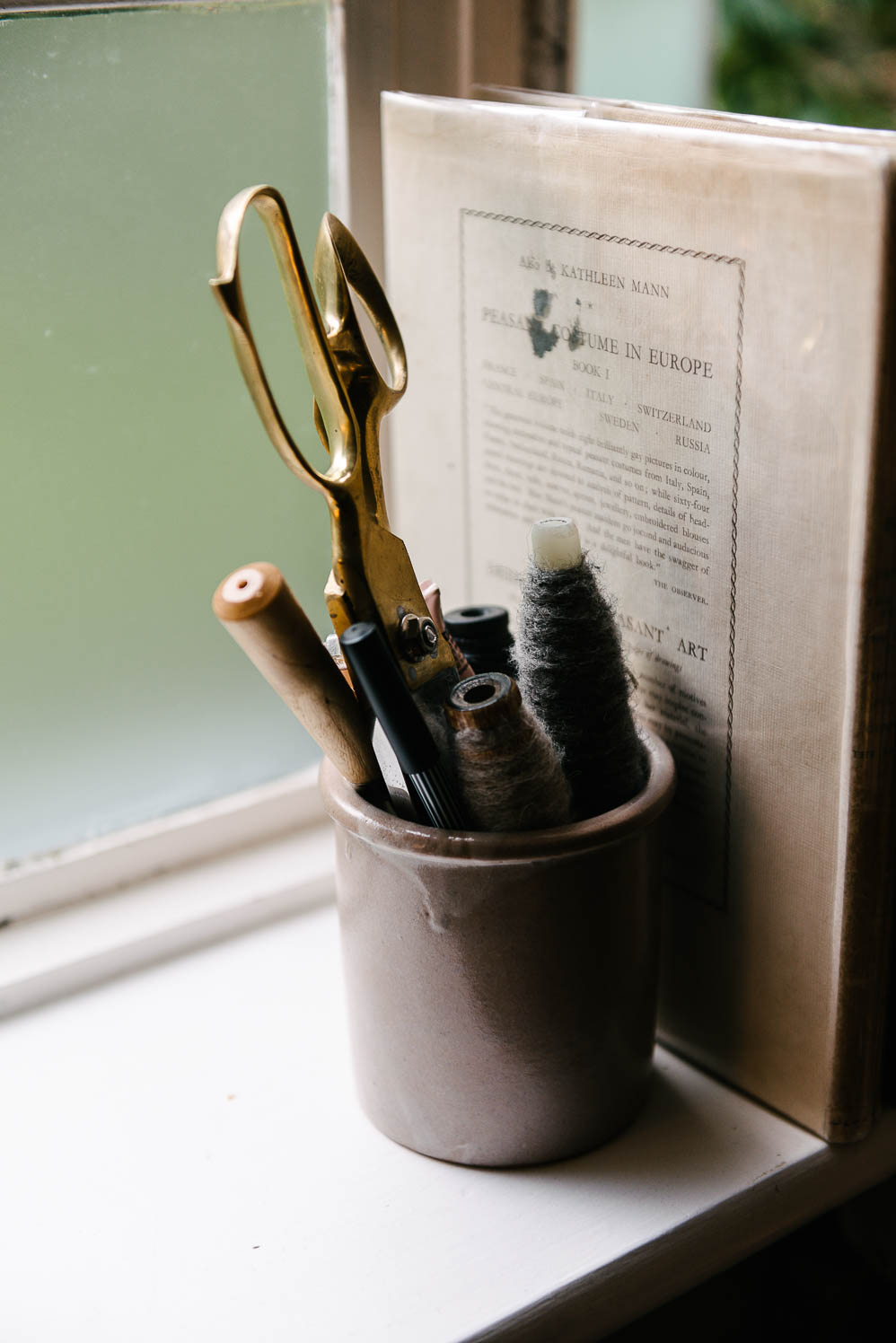
From the Scandinavian Floor Loom
Amy’s hand-woven coats, sweaters and jackets made using Japanese yarns in muted colors
“For the first time in my life I said… Fuck off, no. I actually got to think and read and be still.”
Dallas morphed into Iceland, by way of a Fulbright scholarship and the realisation that the expected path to the world of galleries via an MFA was not for her. She arrived in Iceland in the immediate aftermath of the financial crash that all but destroyed the country’s economy. “Their entire infrastructure basically ceased to exist,” says Amy. “And in a way, it was amazing because it meant people had to be real with each other, there was a real cultural dialogue going on.” On a personal level, Amy experienced a newfound freedom to just be. “I’d always been doing this and that, running this committee or heading up that thing. For the first time in my life I said… Fuck off, no. I actually got to think and read and be still.” All the while, weaving remained a quietly evolving constant in her life. After six brief months back in Texas, Amy and Clayton made the decision to pursue a life of continuous traveling together—and promptly landed in London, which has remained their home ever since. “When I think about it now, it’s ridiculous what I asked of Clayton,” says Amy, breaking into laughter. “Go and get one of the hardest jobs in the academic worlds—a job in philosophy—in either Paris, Berlin, London, Iceland or Antwerp. Go do that.” Her face lights up. “And he did!”
After lunch, Amy is drawn back to the deepest-set room in her home. It’s the room where she spends most of her days, seated at the traditional Swedish floor loom she works on. It fills the space without ever dominating it: all softly skeletal wood and weightless space between, rising up over the flat expanse of yarn mid-weave. Amy sits down and picks up the shuttle; gets up again, wanders a little, reads aloud that poem: head lifted… with waves to navigate… and sits down again. She begins to weave. Initially she talks as her hands glide across wool and her feet work the levers beneath her. She talks about the feel of a traditional loom compared to a modern one (“it has history, it moves with you…”) and the meticulously chosen, hand-dyed yarn she sources from Japan. Soon though she drifts off into silence: that studious mix of intensive concentration and faraway contemplation overwhelming everything else in the room. Beneath her hands and very slowly, a rectangular swathe of fabric begins to appear.
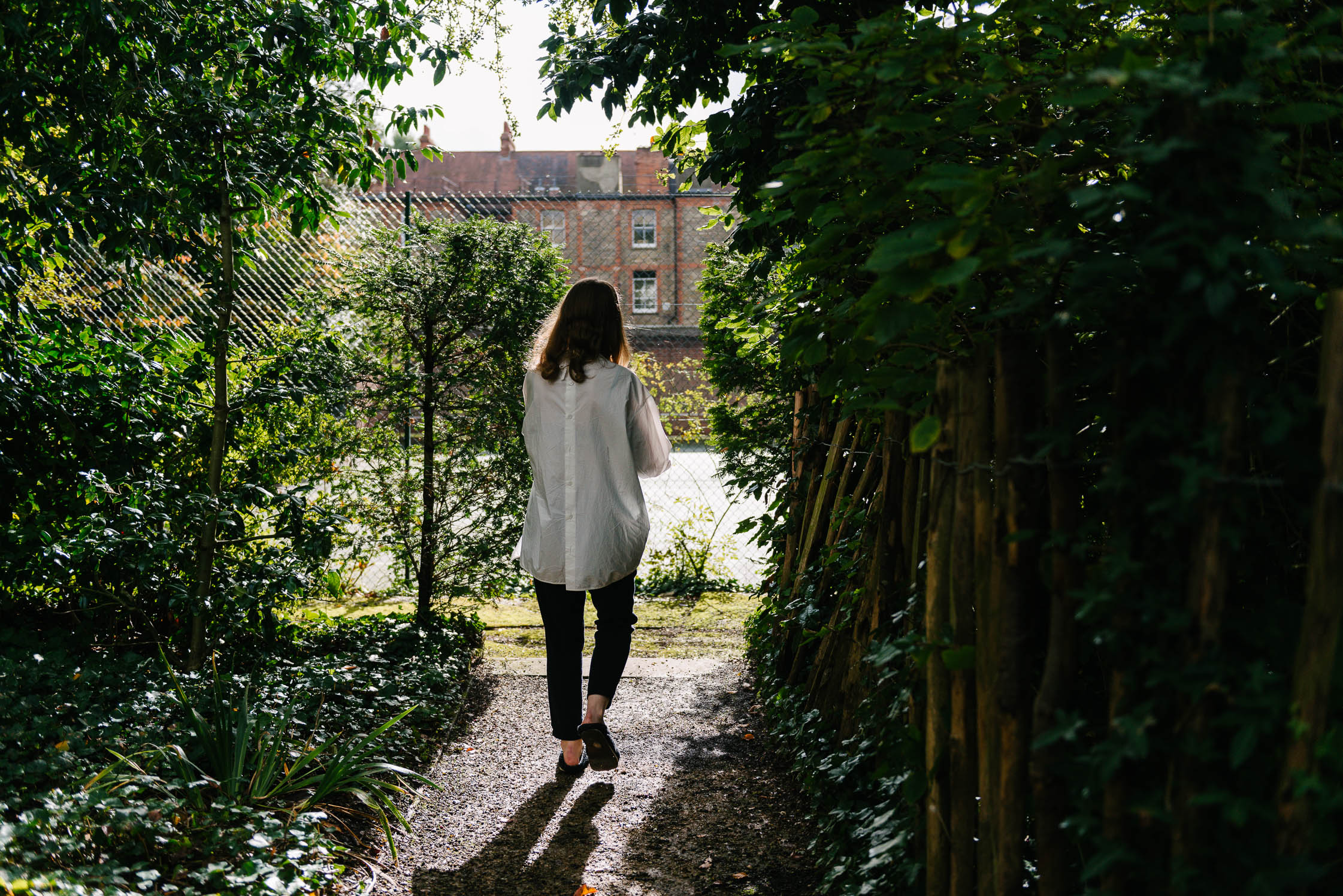
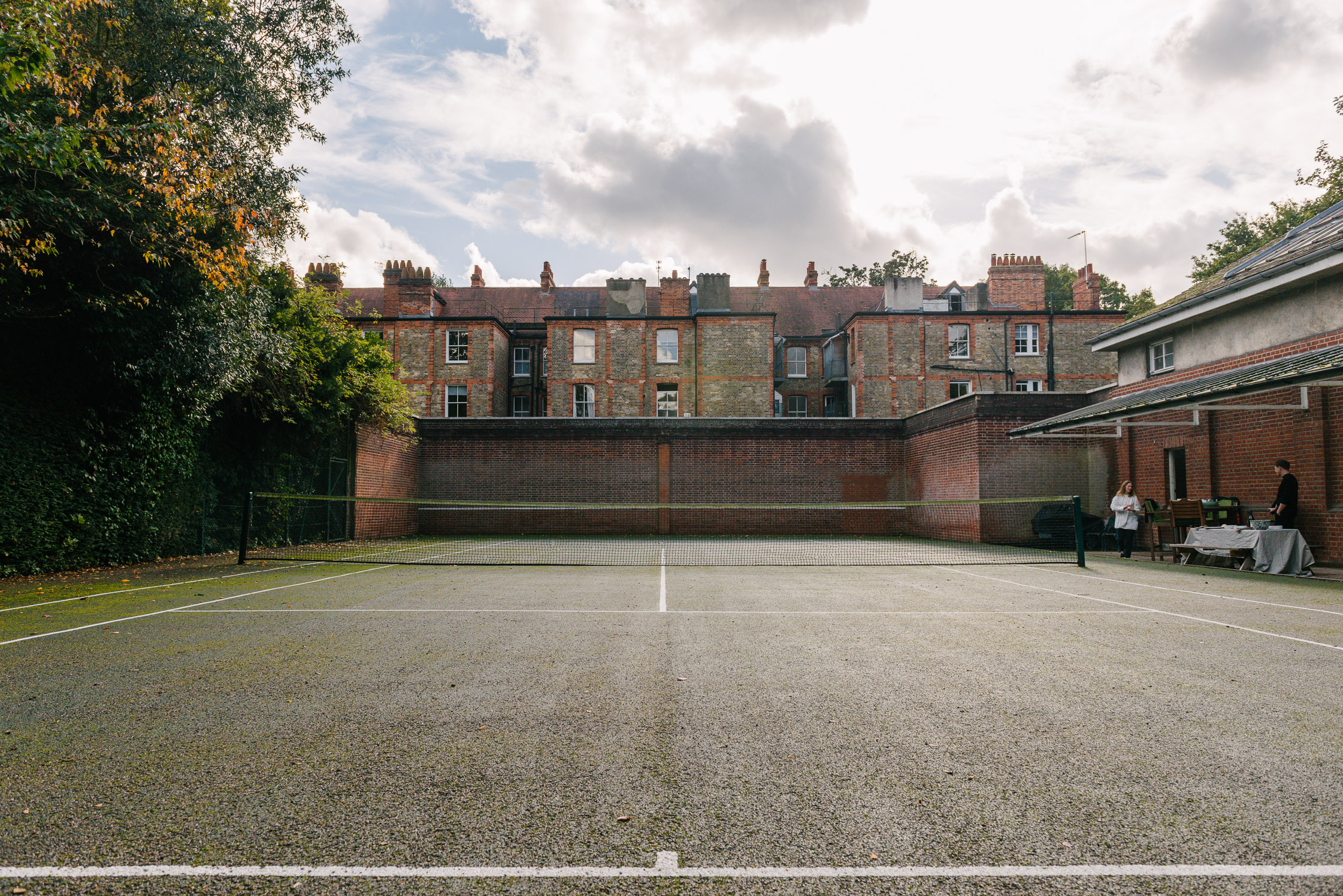
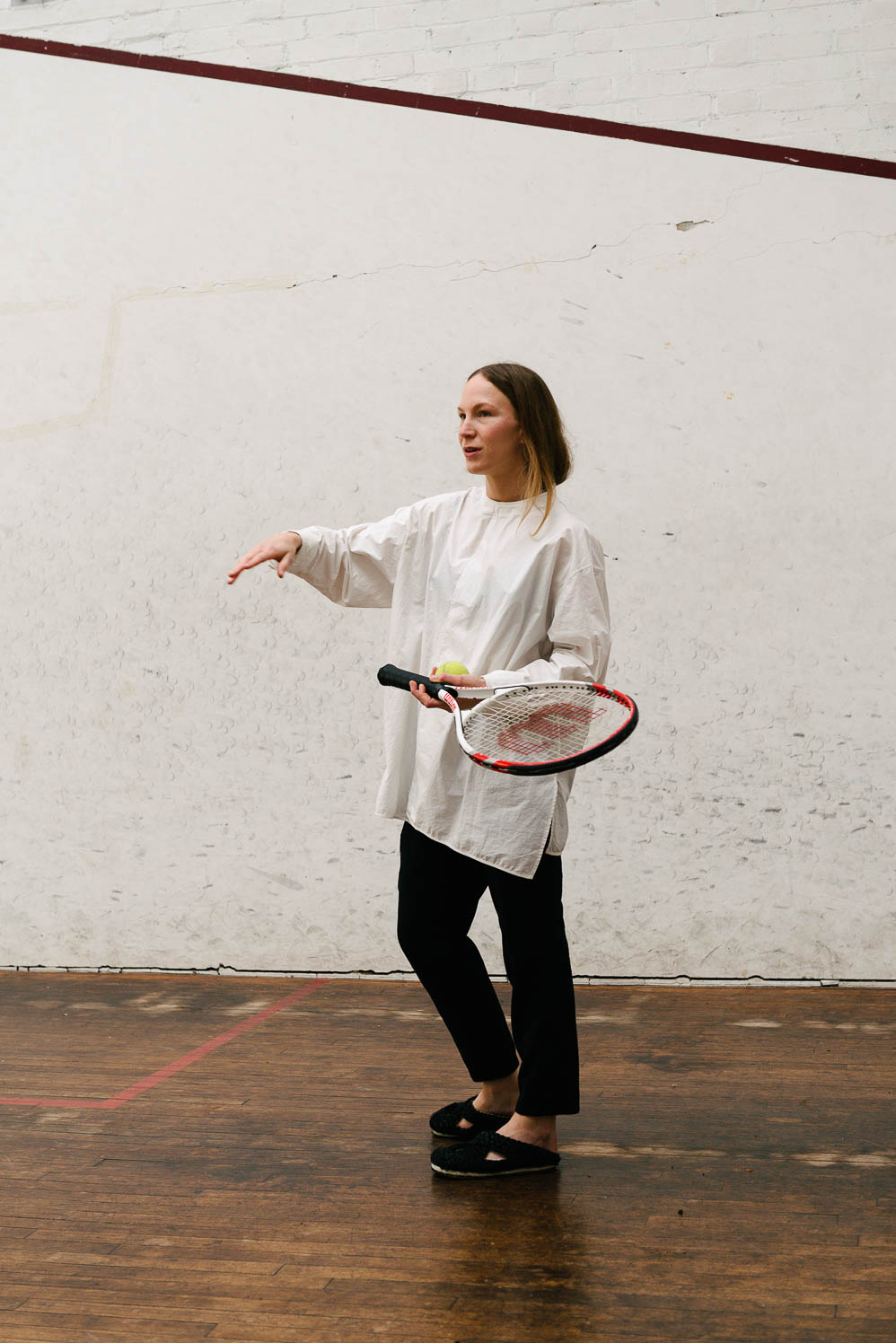
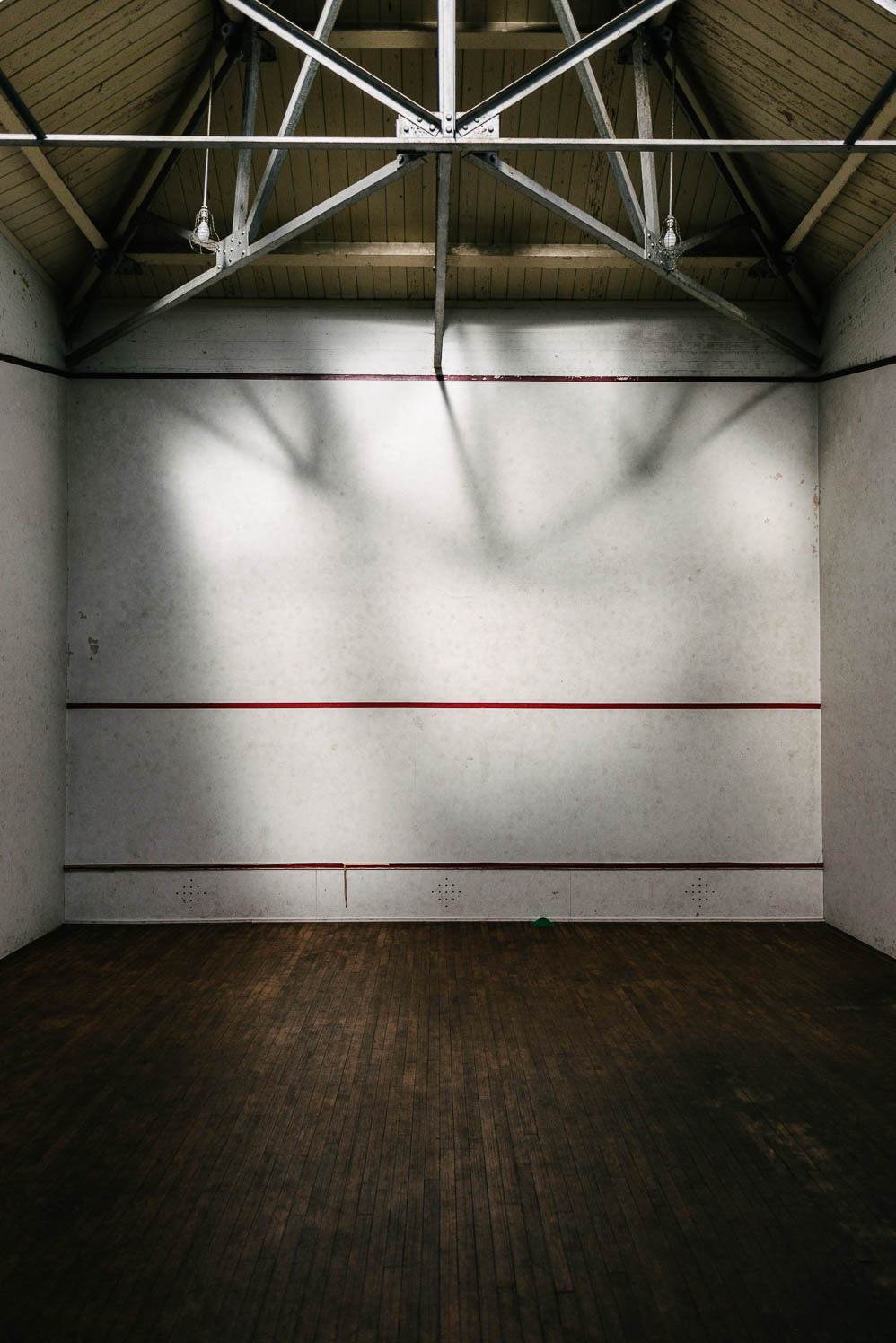
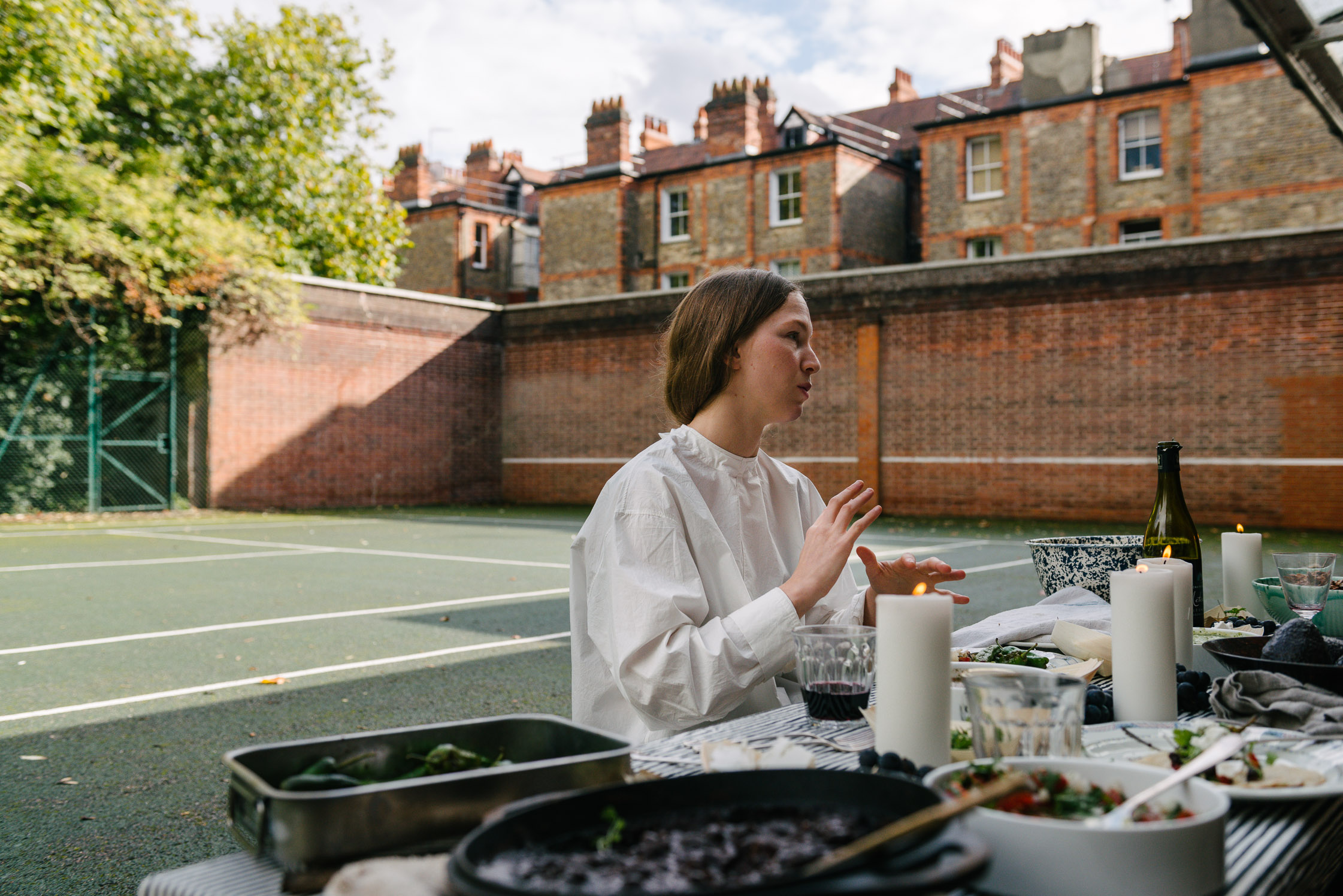
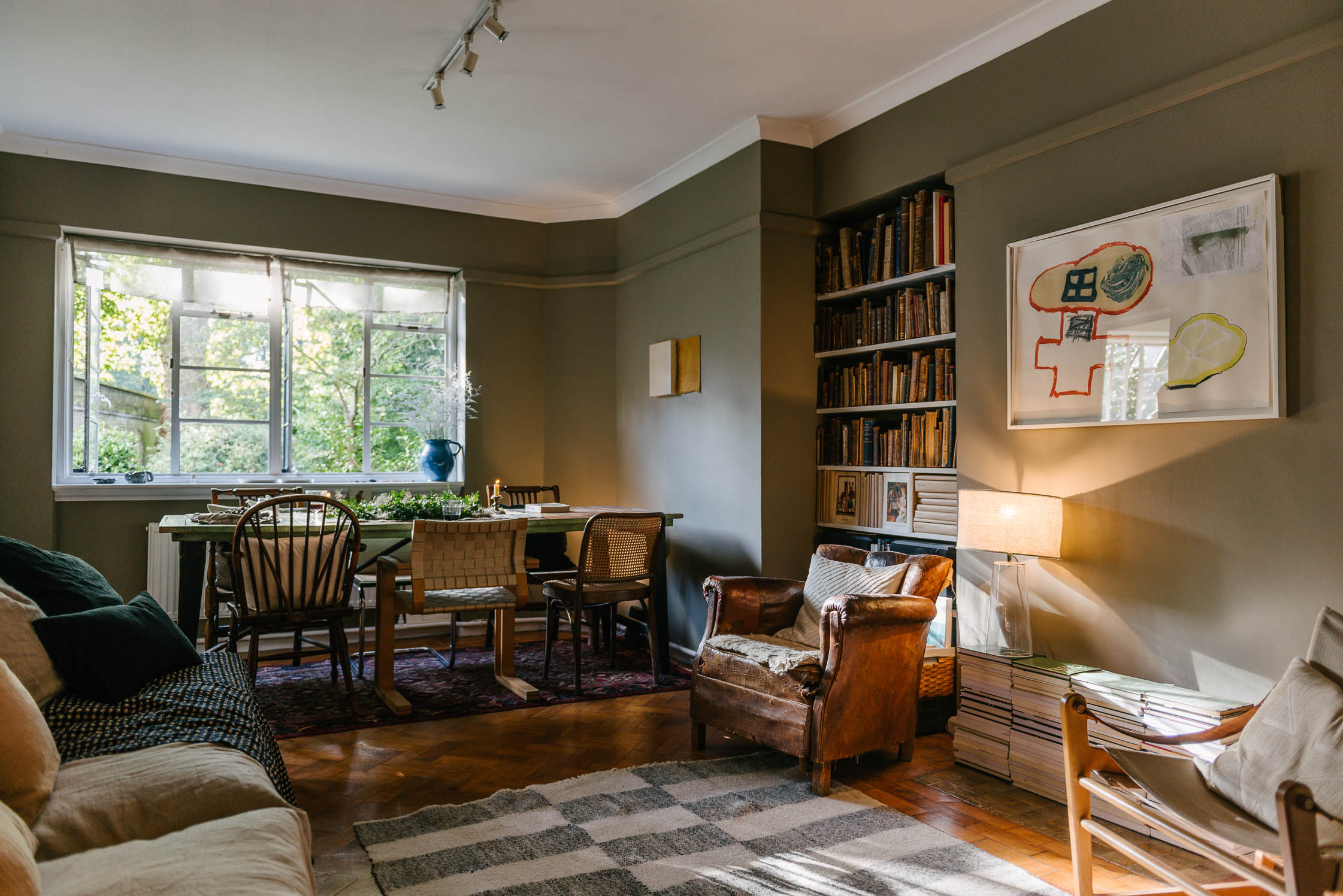
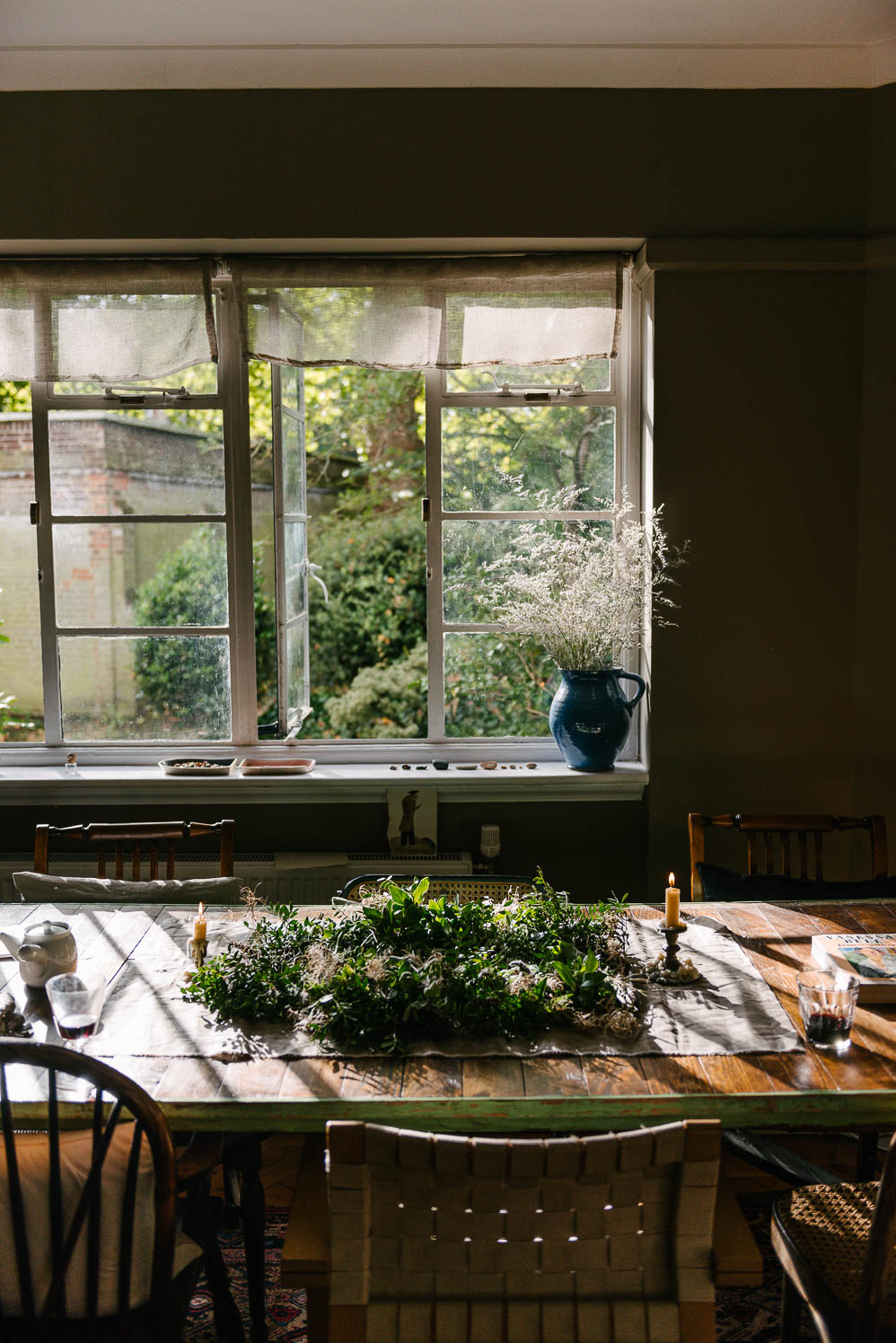
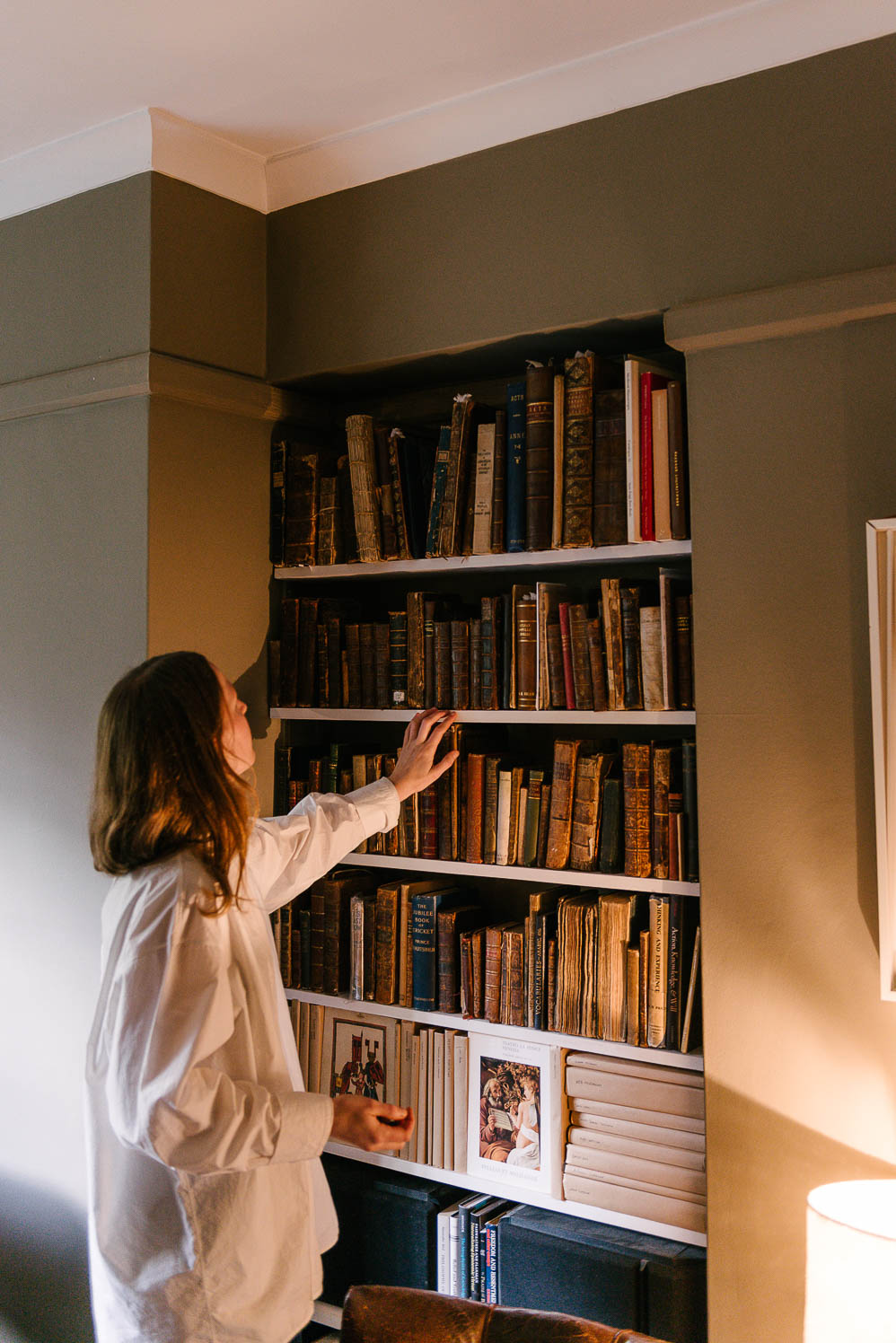
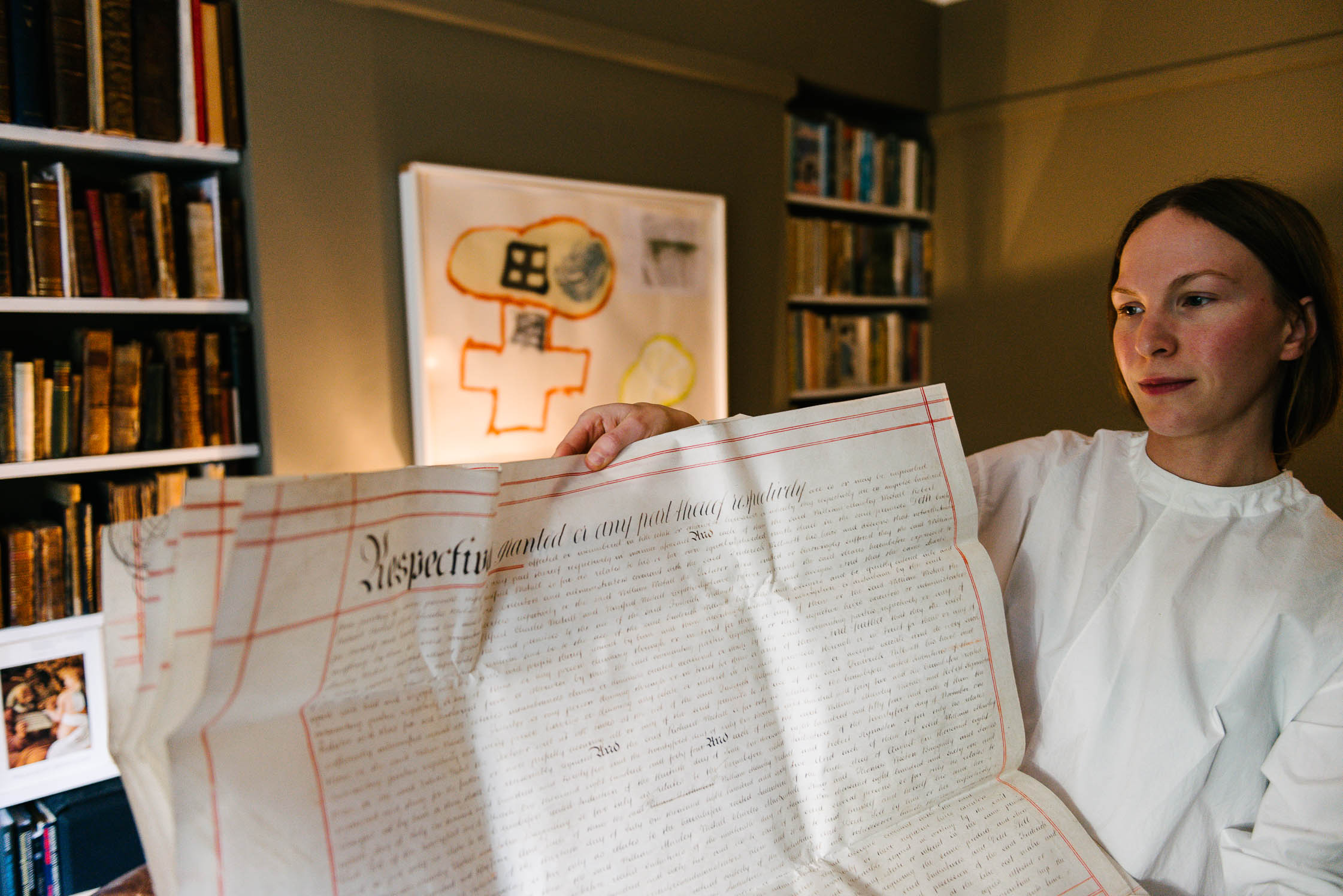
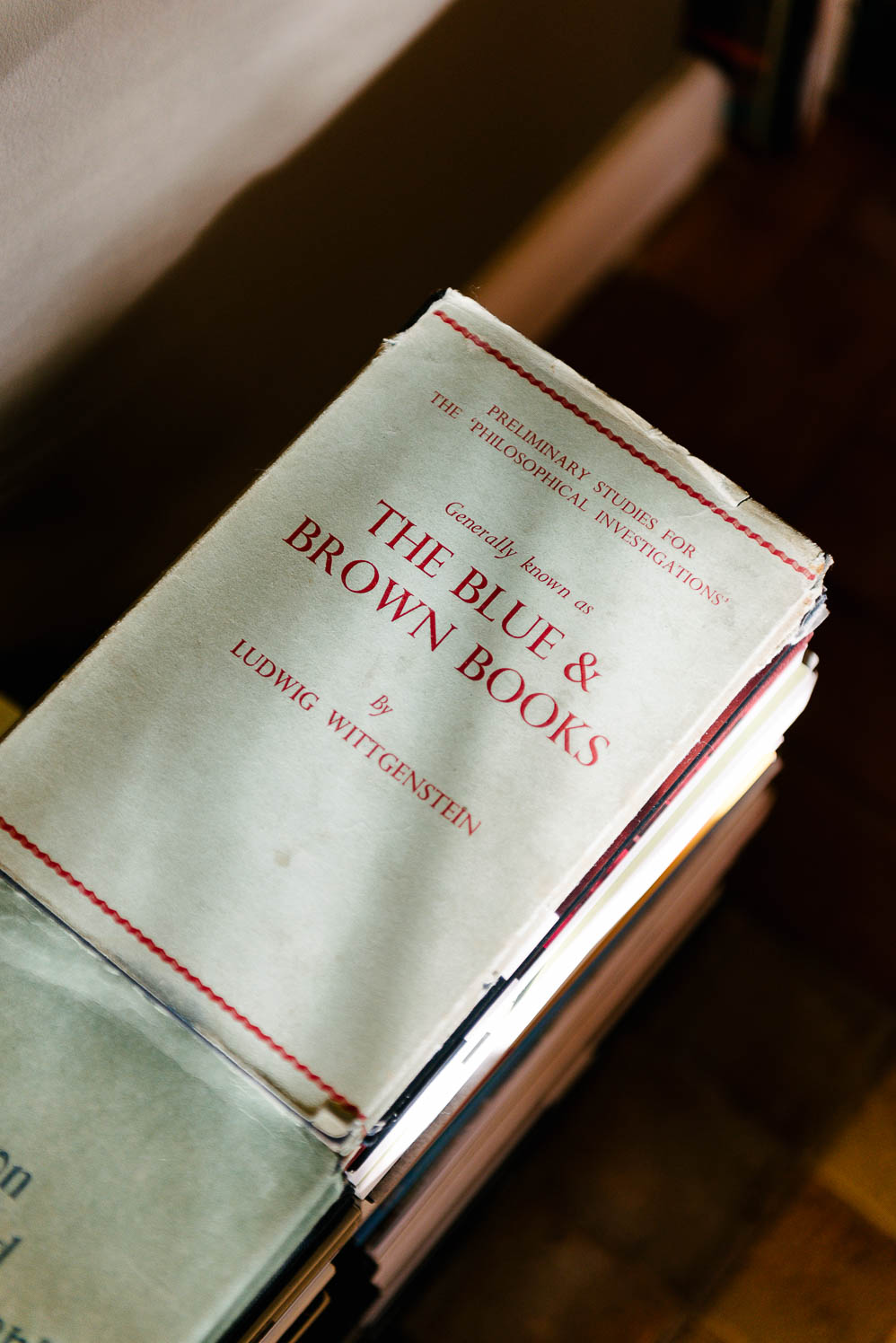
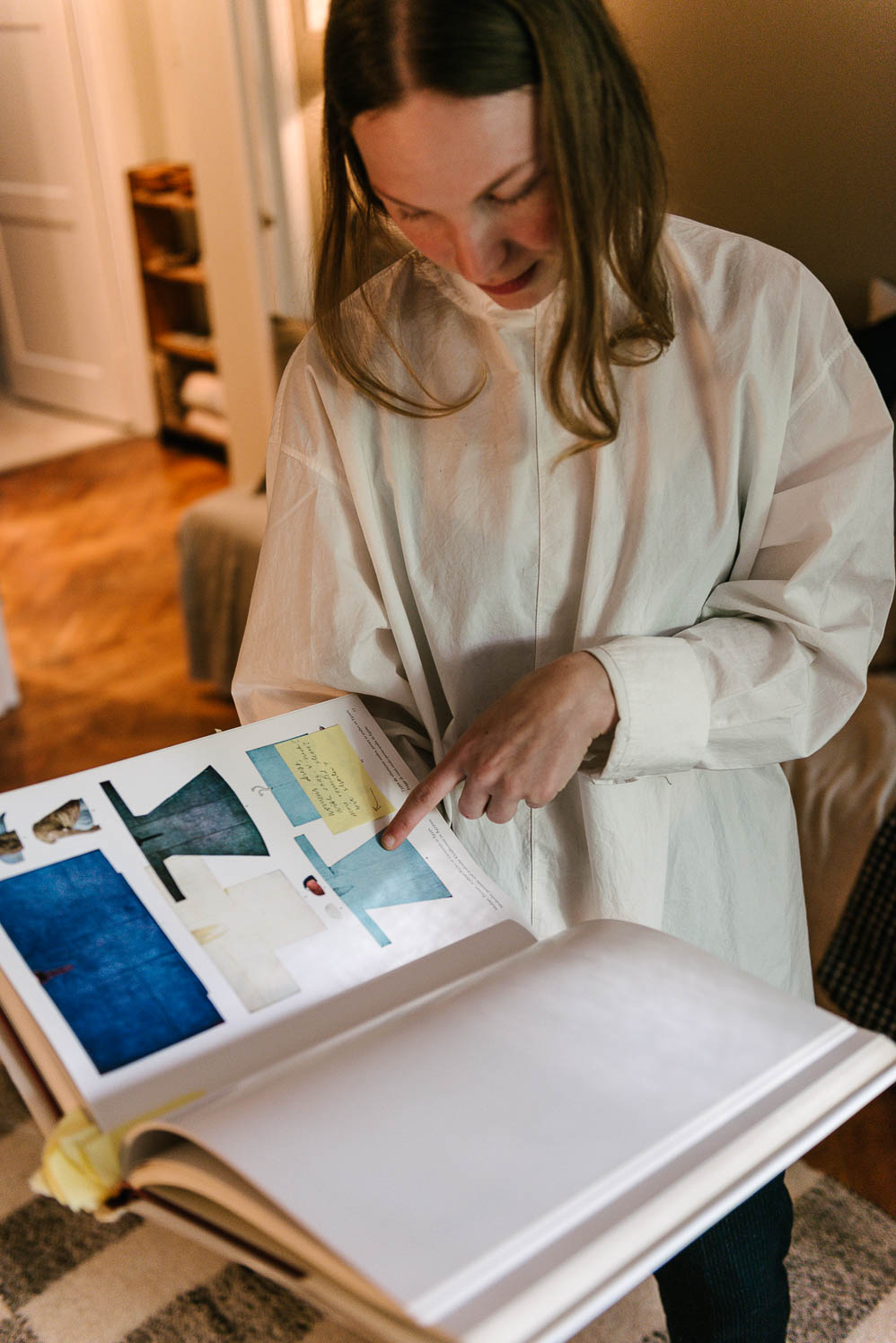
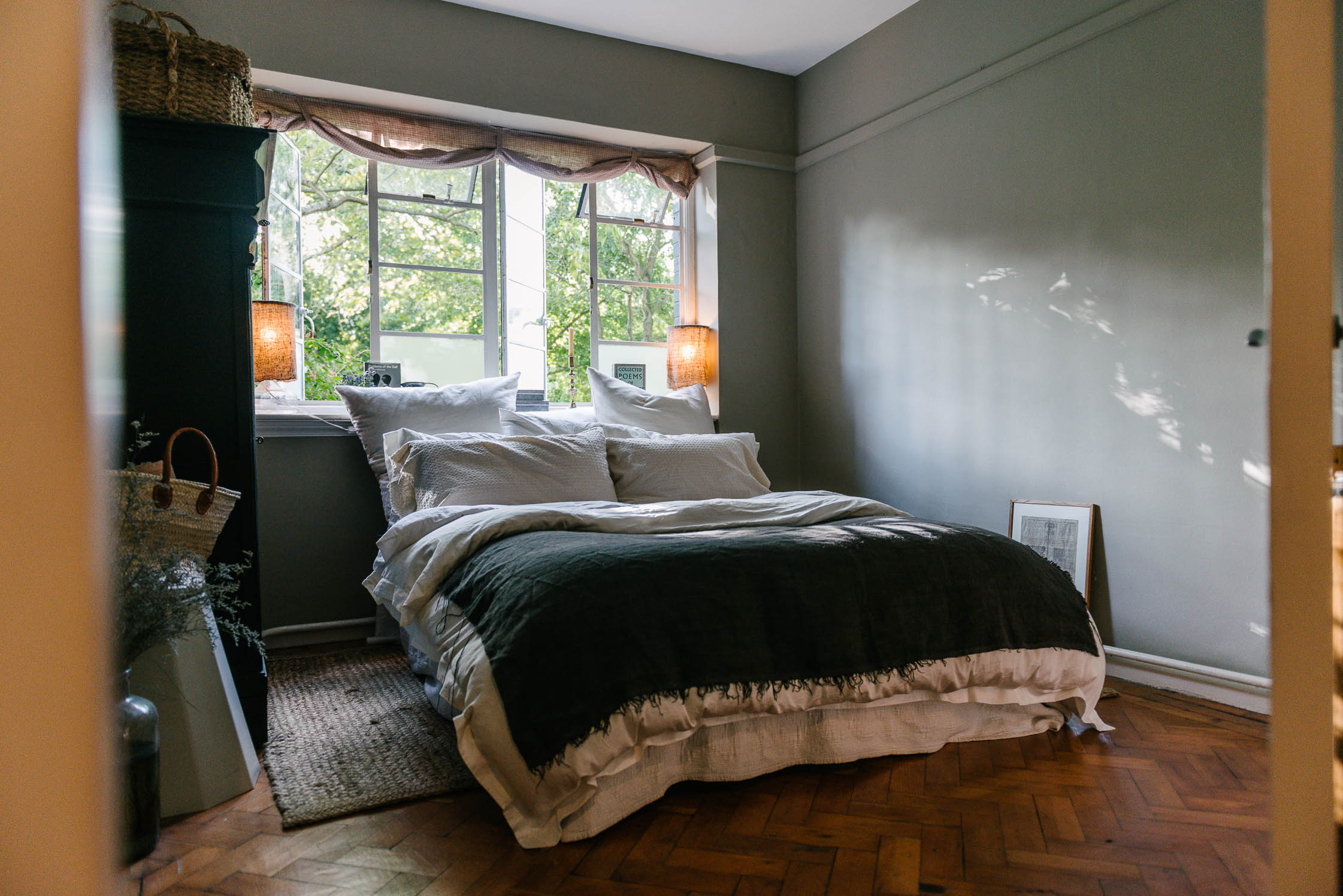
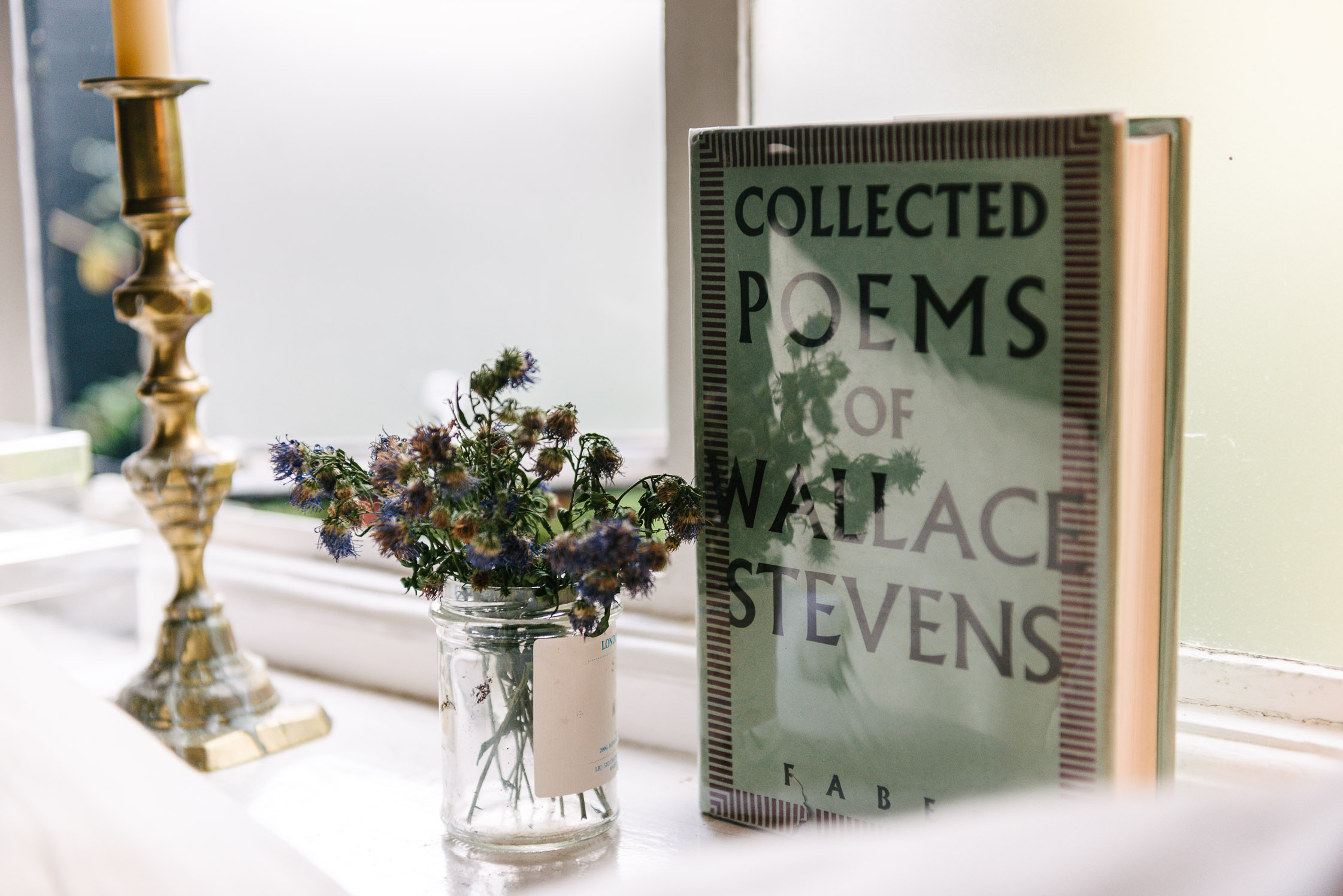
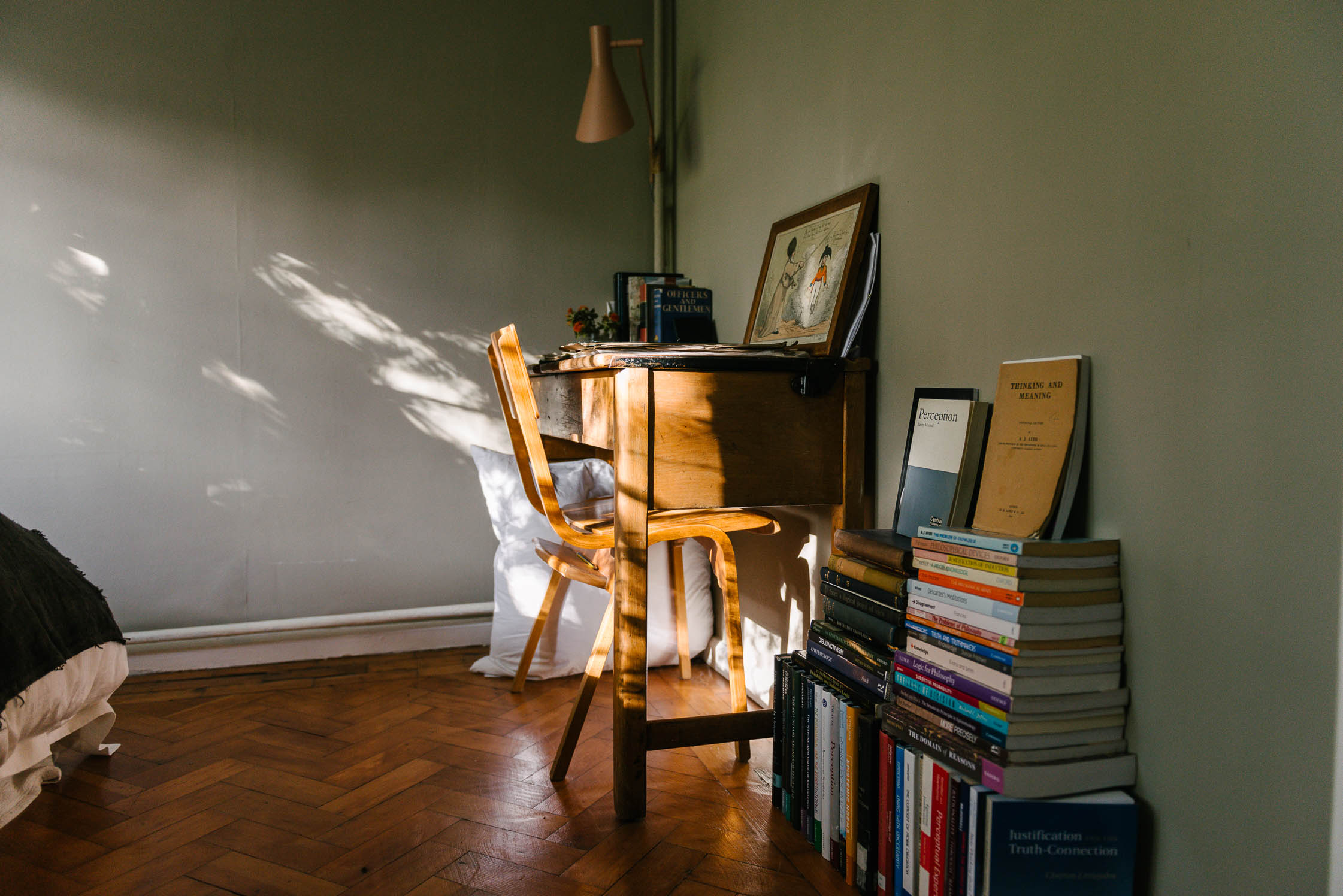
You can see parallels between Amy’s earlier performative work and the garments she currently produces, painstakingly hand-woven one-offs for private clients and her one (very patient, very understanding) stockist, the boundary-pushing East London boutique Hostem. This niche community of admirers understand that they are not simply wearing an item of clothing: they are wearing weeks of weaving; centuries of honed skills. They are wearing something of Amy that she may not quite be able to put into words but nevertheless exists in the lingering aftermath of her laborious yet meditative work.
Amy heads out with Agnes in the late-afternoon light to the famous Hampstead Heath, just a stone’s throw from her doorstep. It’s where she also begins her day, with a swim in the ladies-only bathing pond. “You see these incredible women there, they’re 80 years old and they really swim,” says Amy as she tracks down a well-chewed tennis ball that Agnes has momentarily forgotten about. “I just kind of float,” she adds. Walking vaguely in the direction of Kenwood House in the north, Amy enthusiastically points out her favourite details in the ever shifting landscapes. You can see why Amy loves the Heath so much: a great flattening of time and space and ideas woven across 700 acres; a cross-section of ponds, lakes, stately homes, gnarled old woodland, architectural oddities, people and not-people and finally—as the last of the daylight sunshine disappears—a great thunderclap of glorious, torrential rain that speaks to the place louder than any words.
“…She appears,
head lifted; she is borne upon a shuttle—
an image from a Nordic tale, a drama
of the sea, with waves to navigate,
savage or tame. But let us leave the sea…”
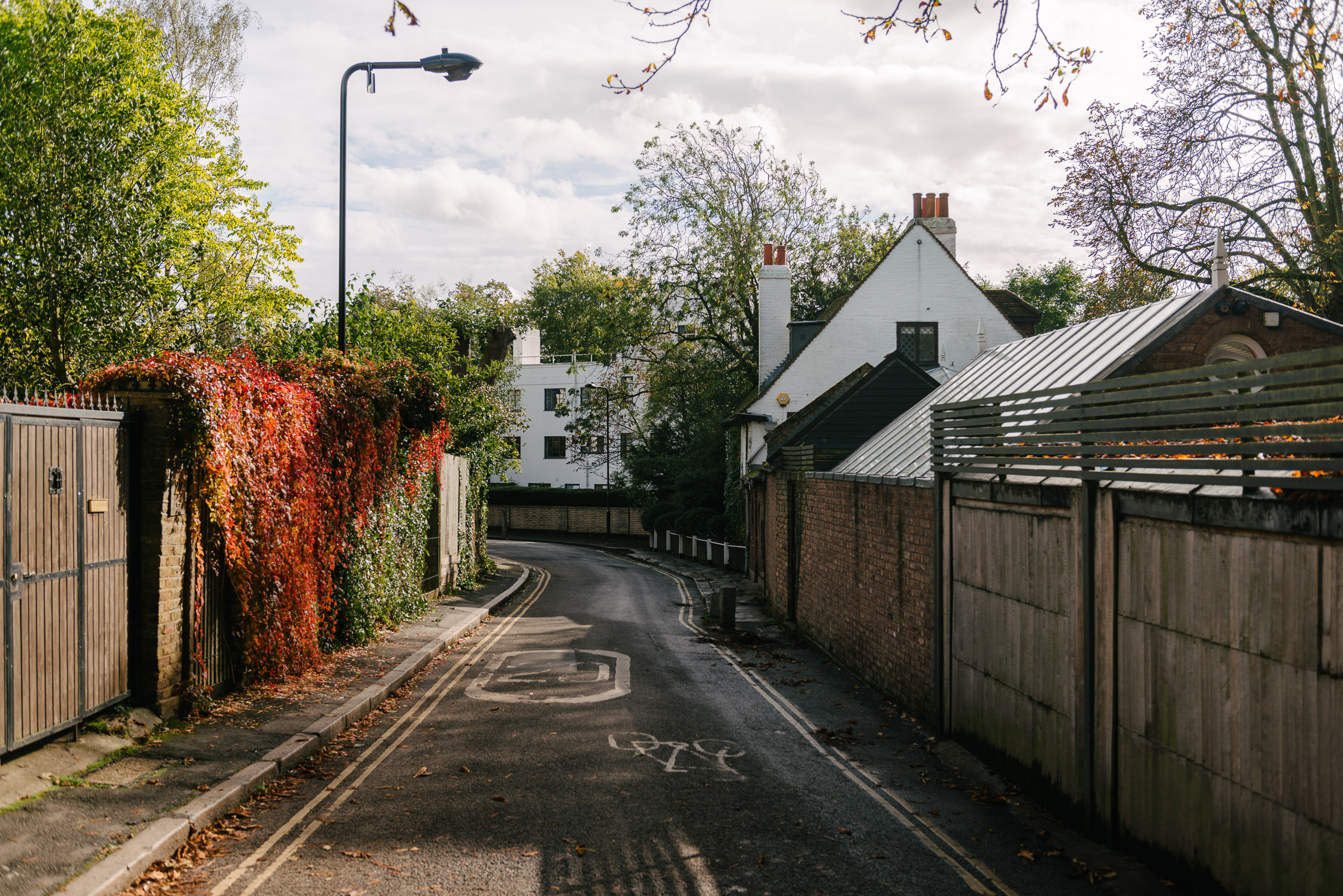
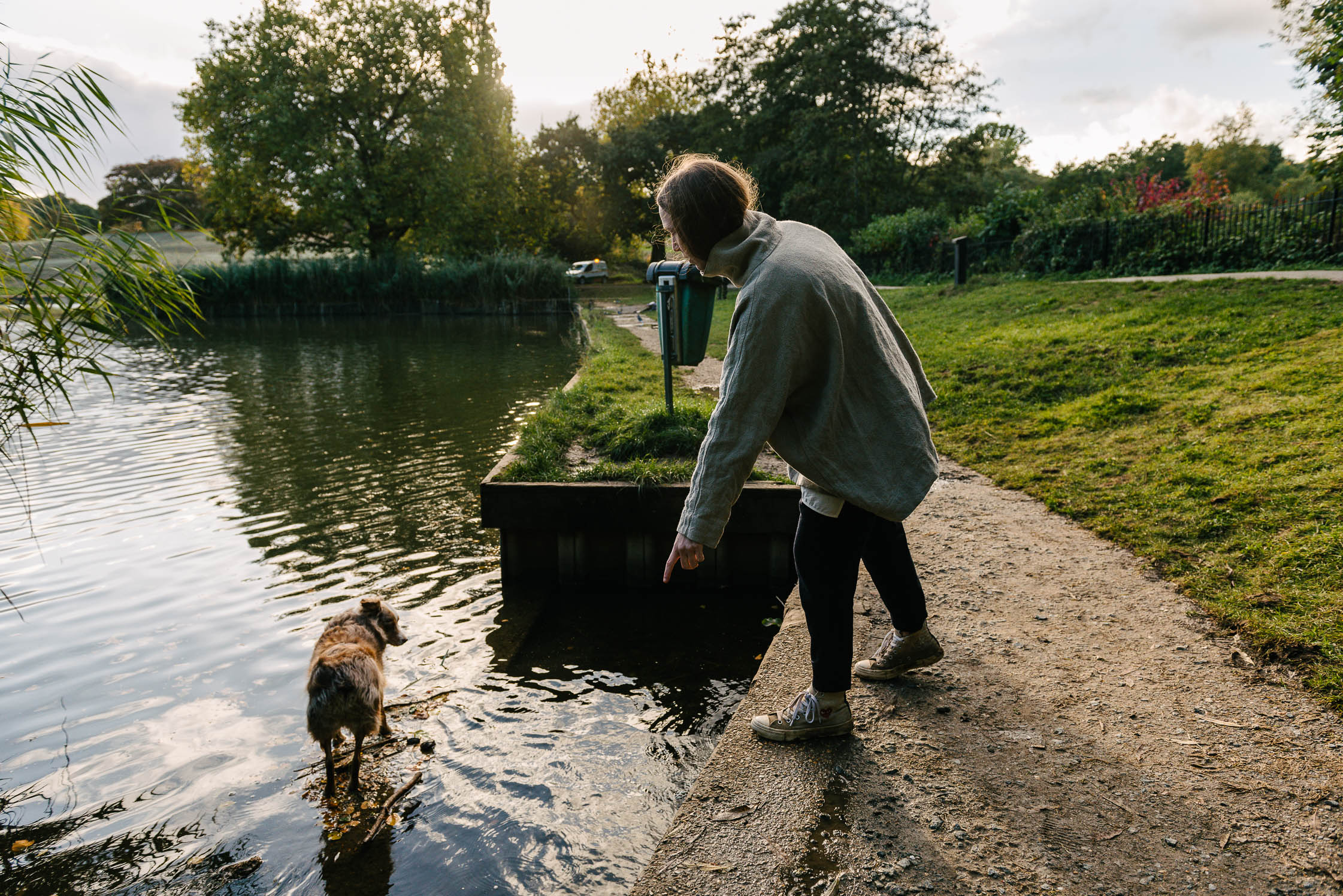
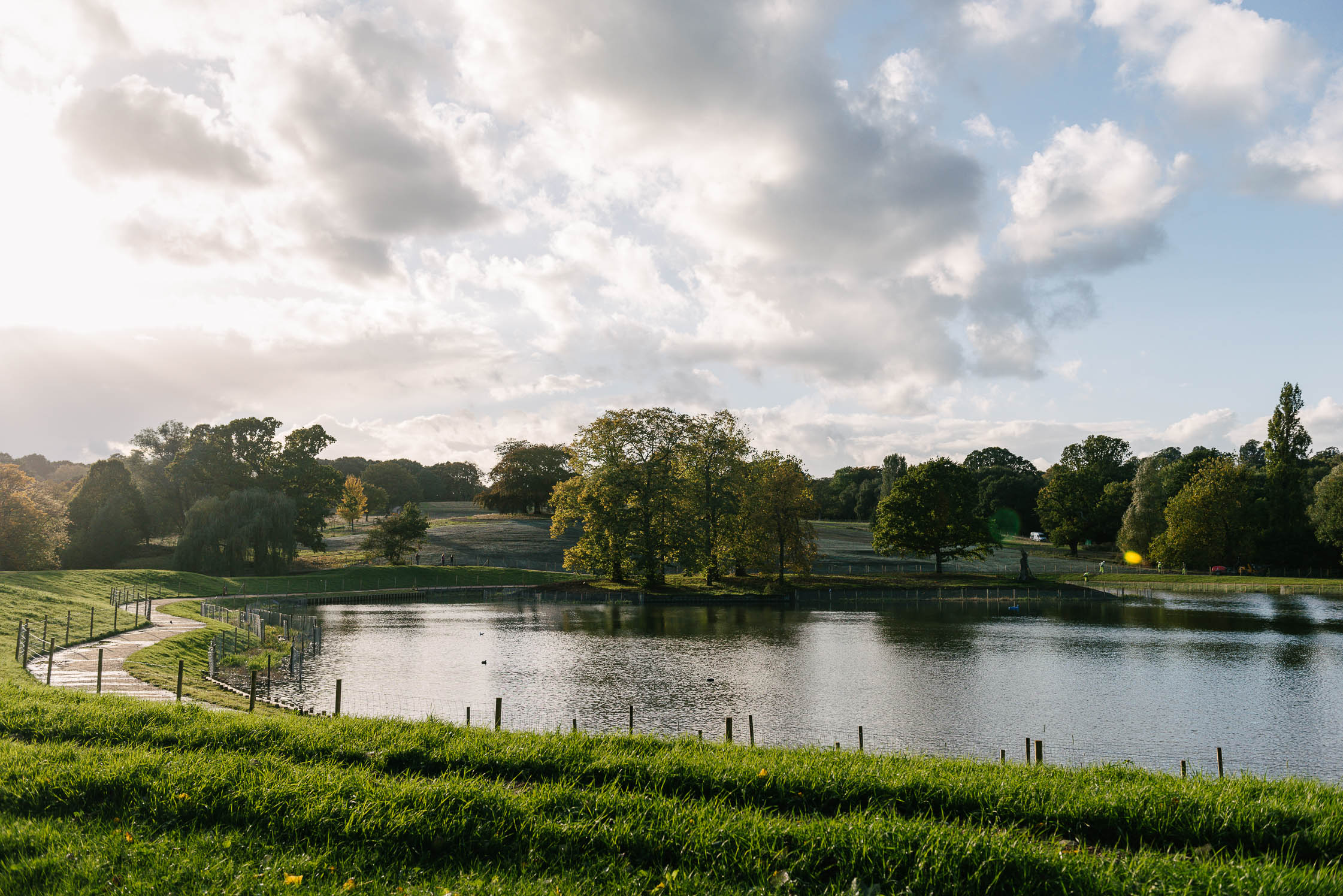
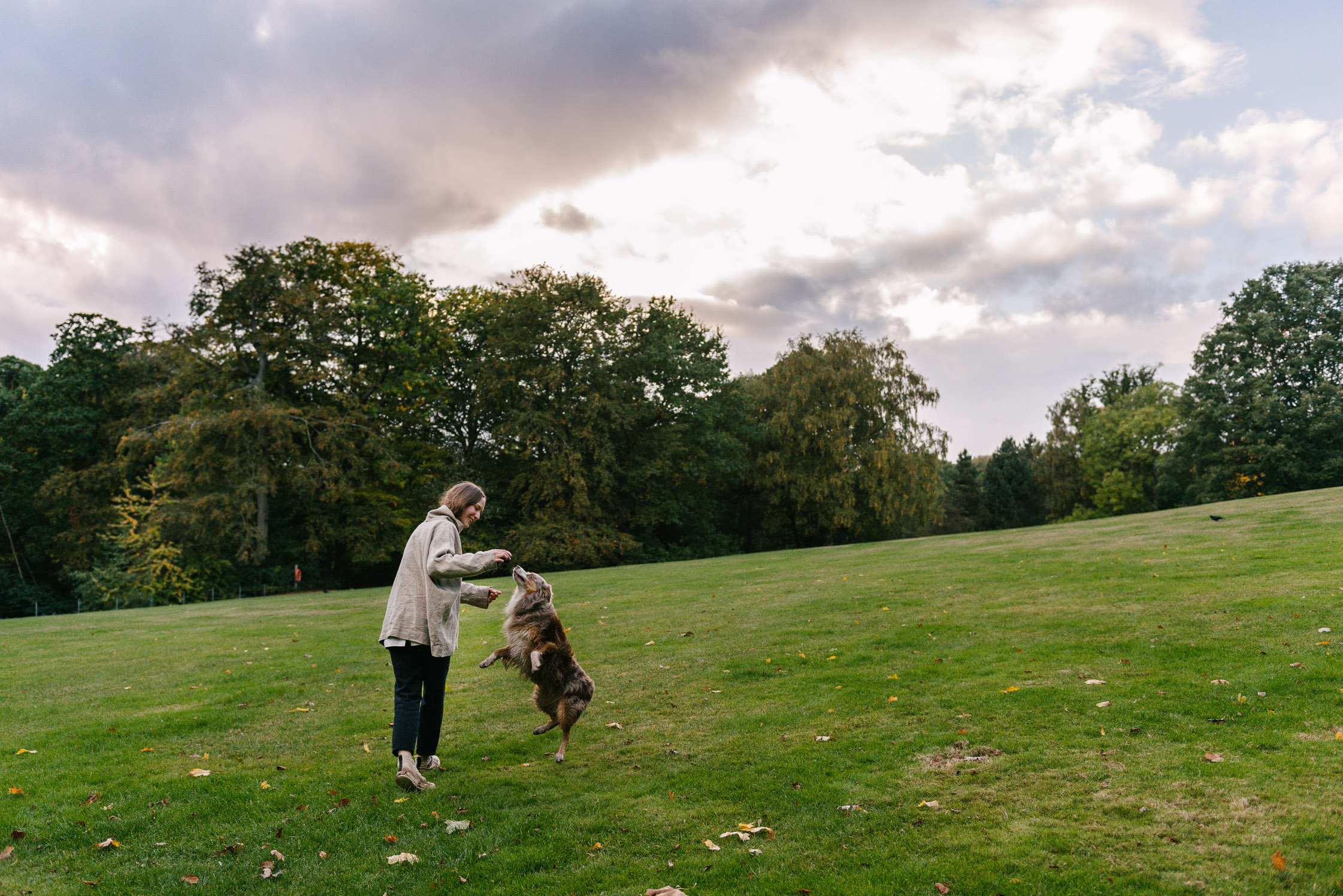
Thank you Amy for inviting us into your home with such warmth and generosity. You can delve further into Amy’s world by visiting her website here, or paying a visit to Hostem in East London. For those of you left inspired by Amy’s work, head over to Werde, where you’ll find her DIY steps for a foraged woven centerpiece.
Text: James Darton
Photography: Daniel Müller
